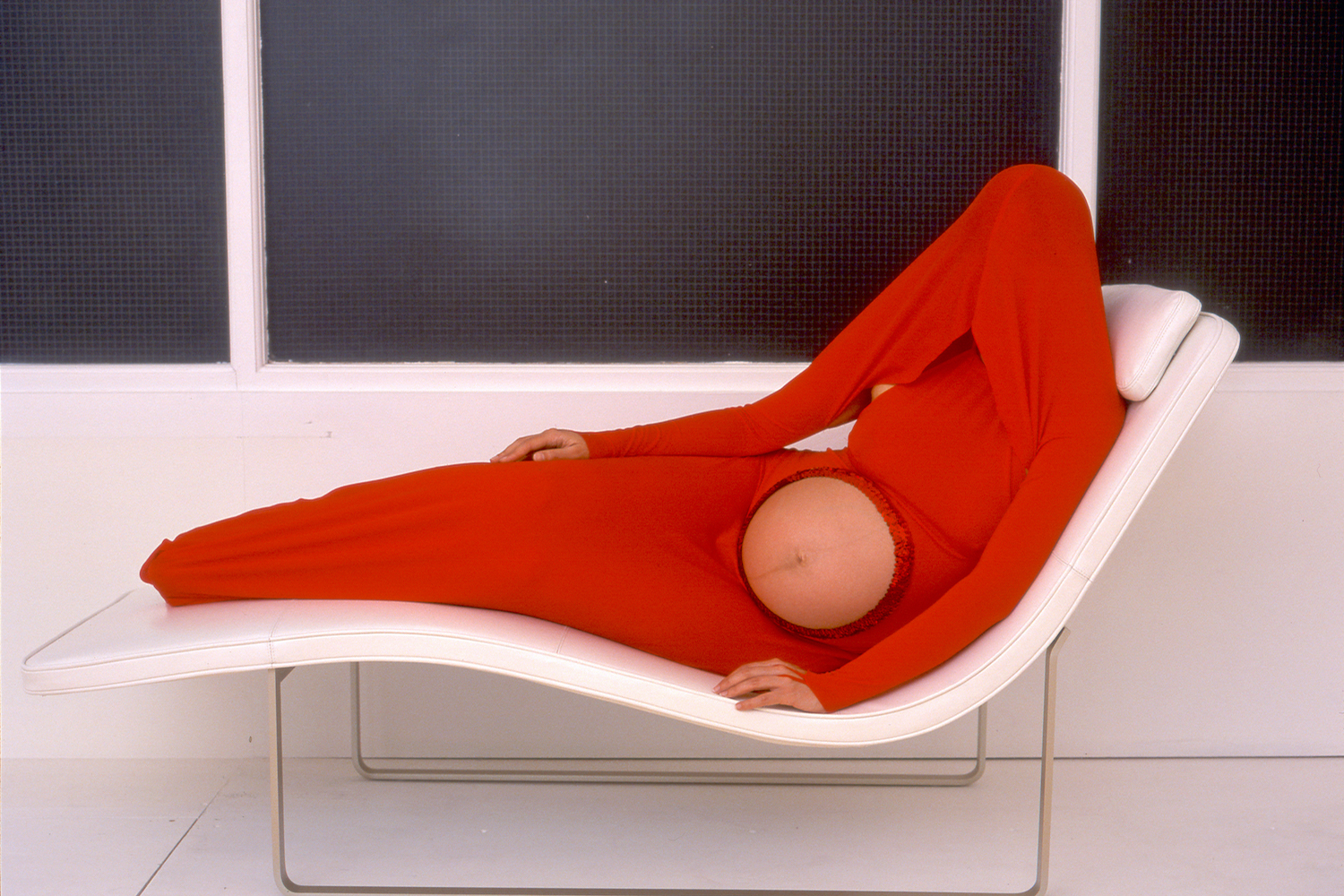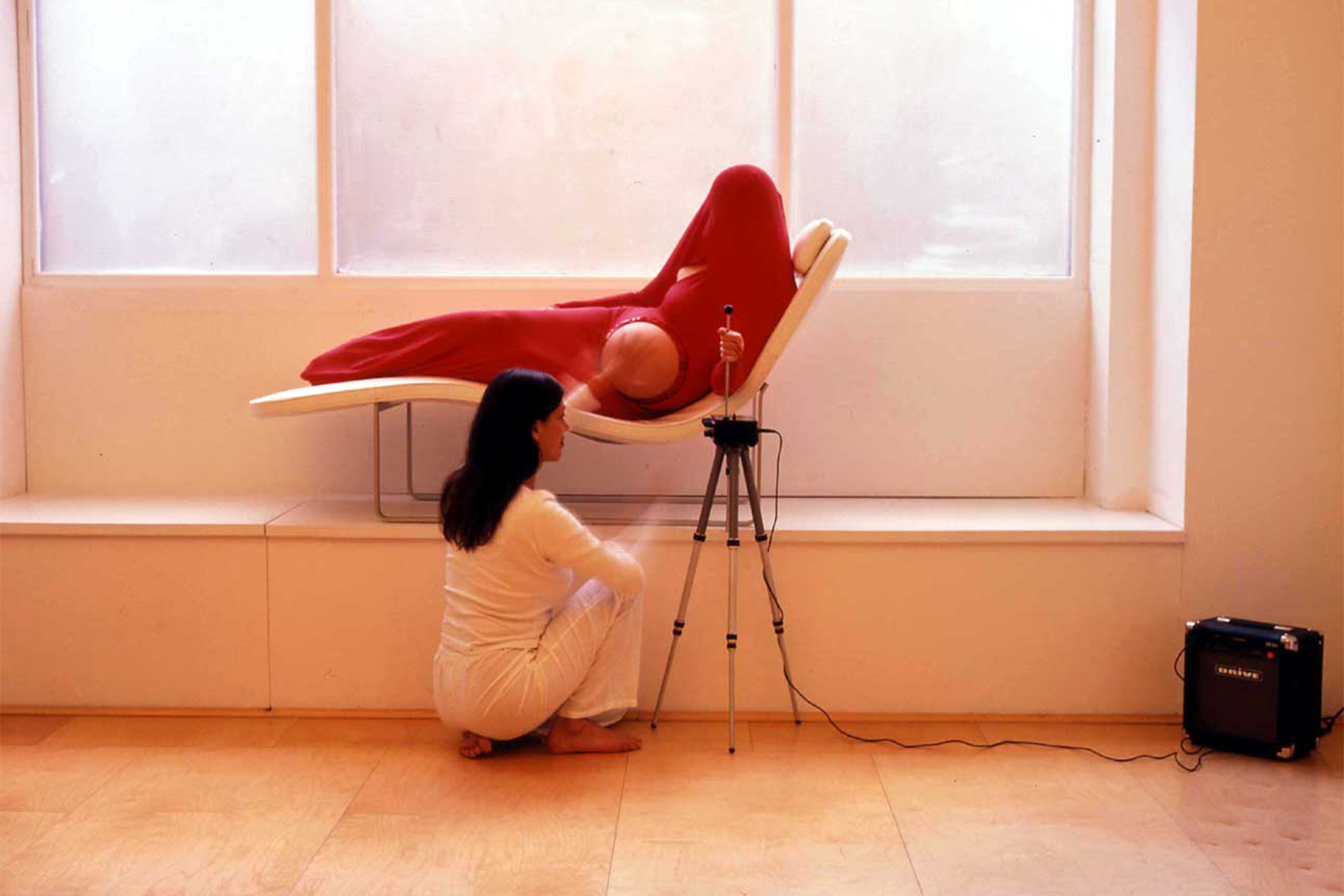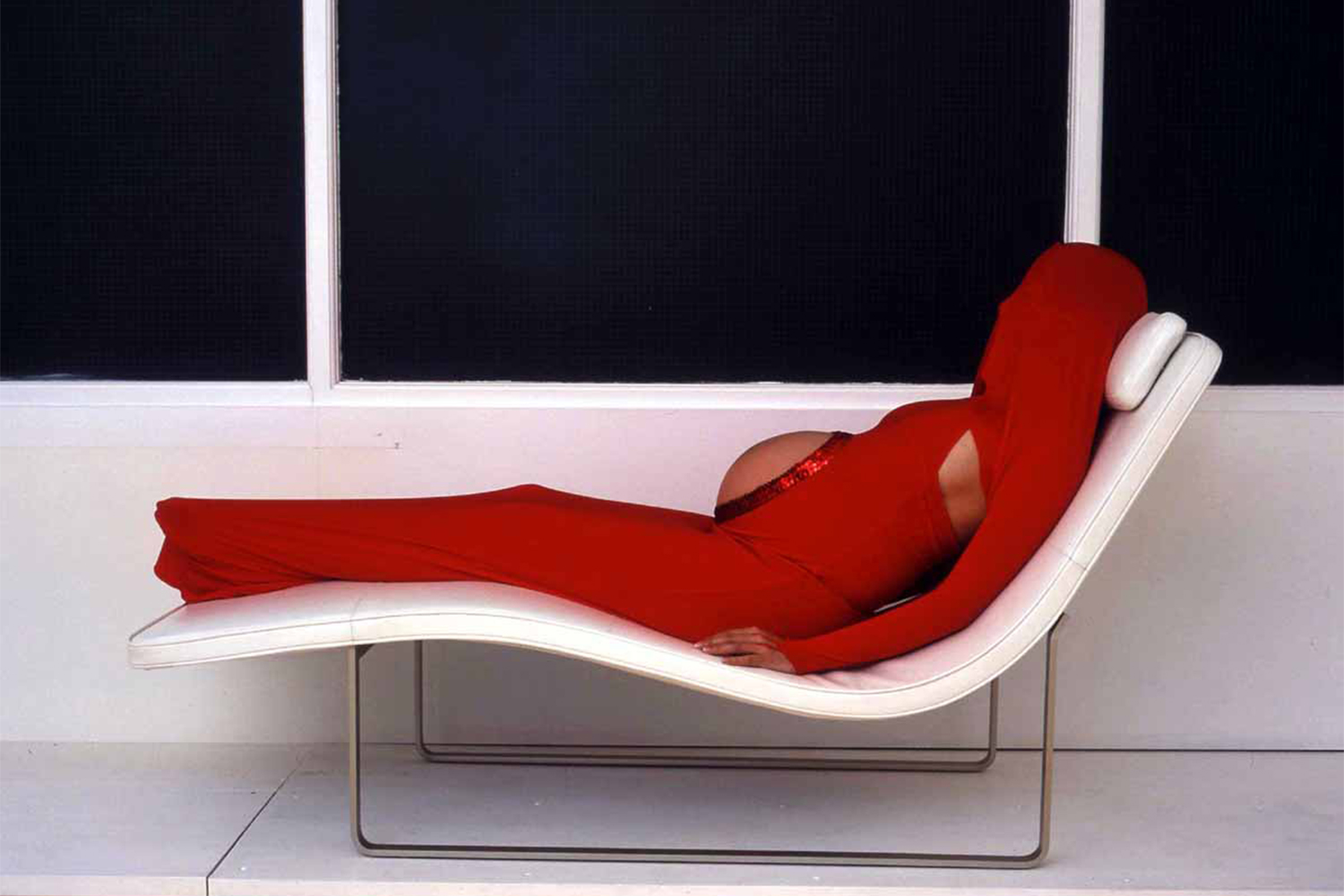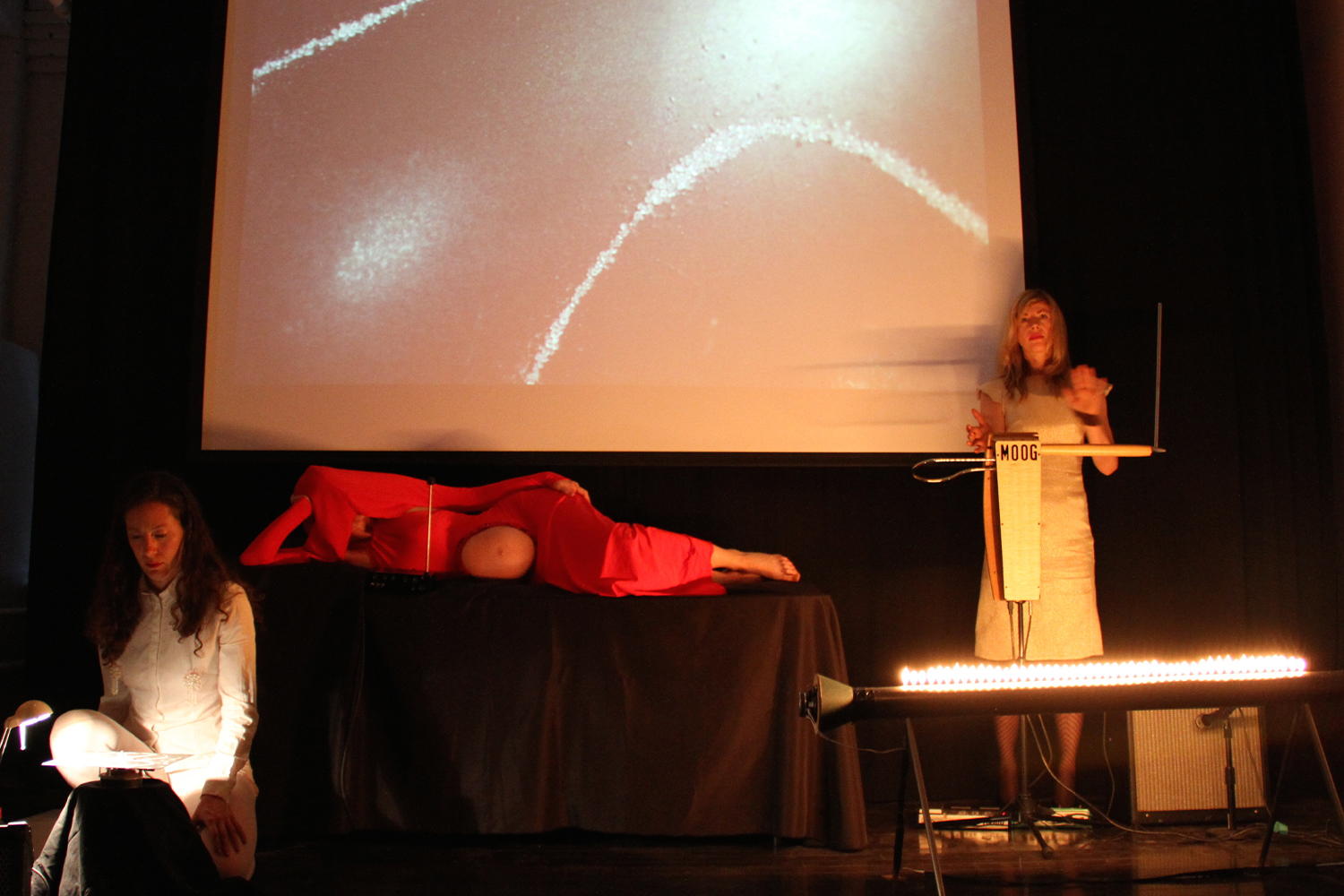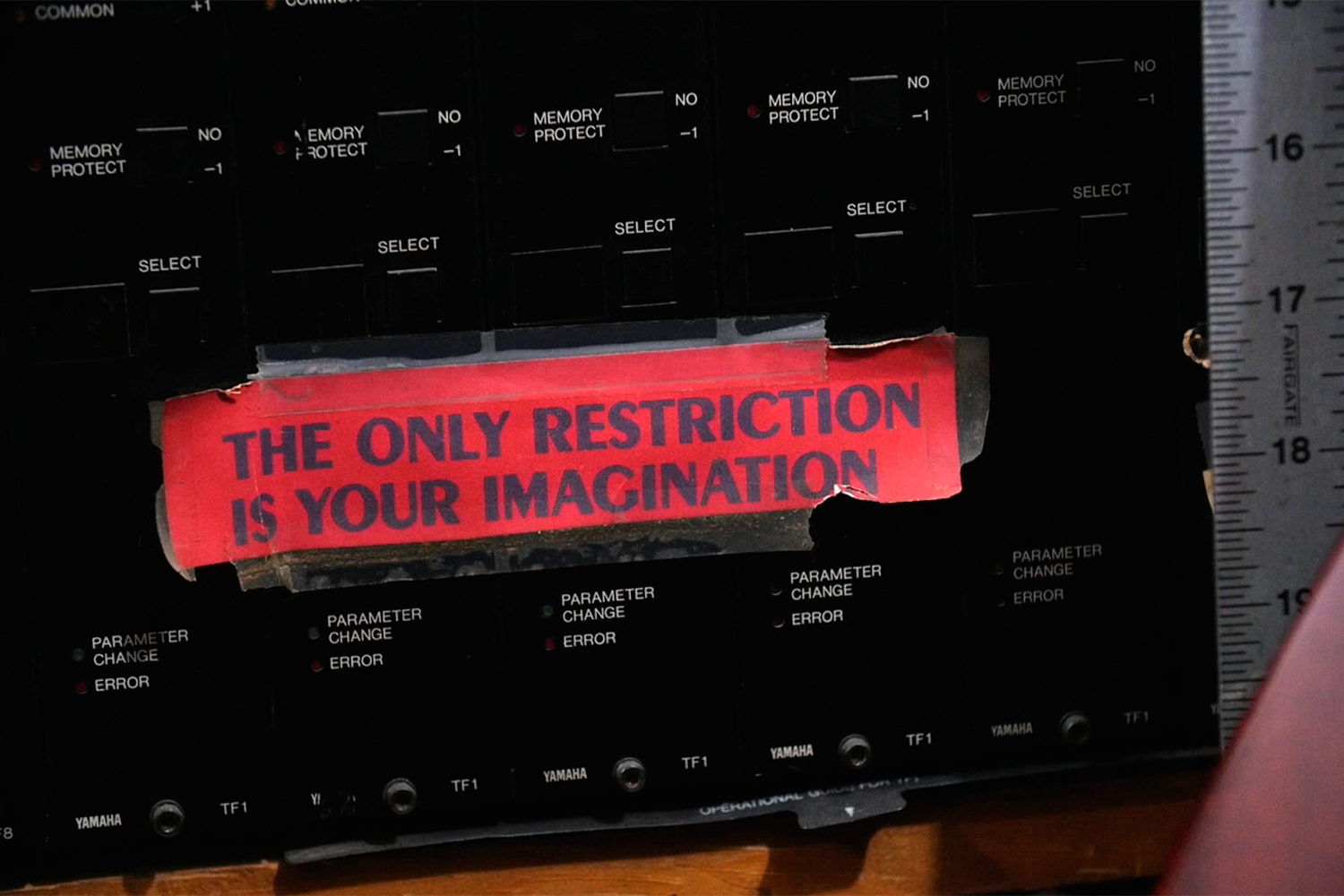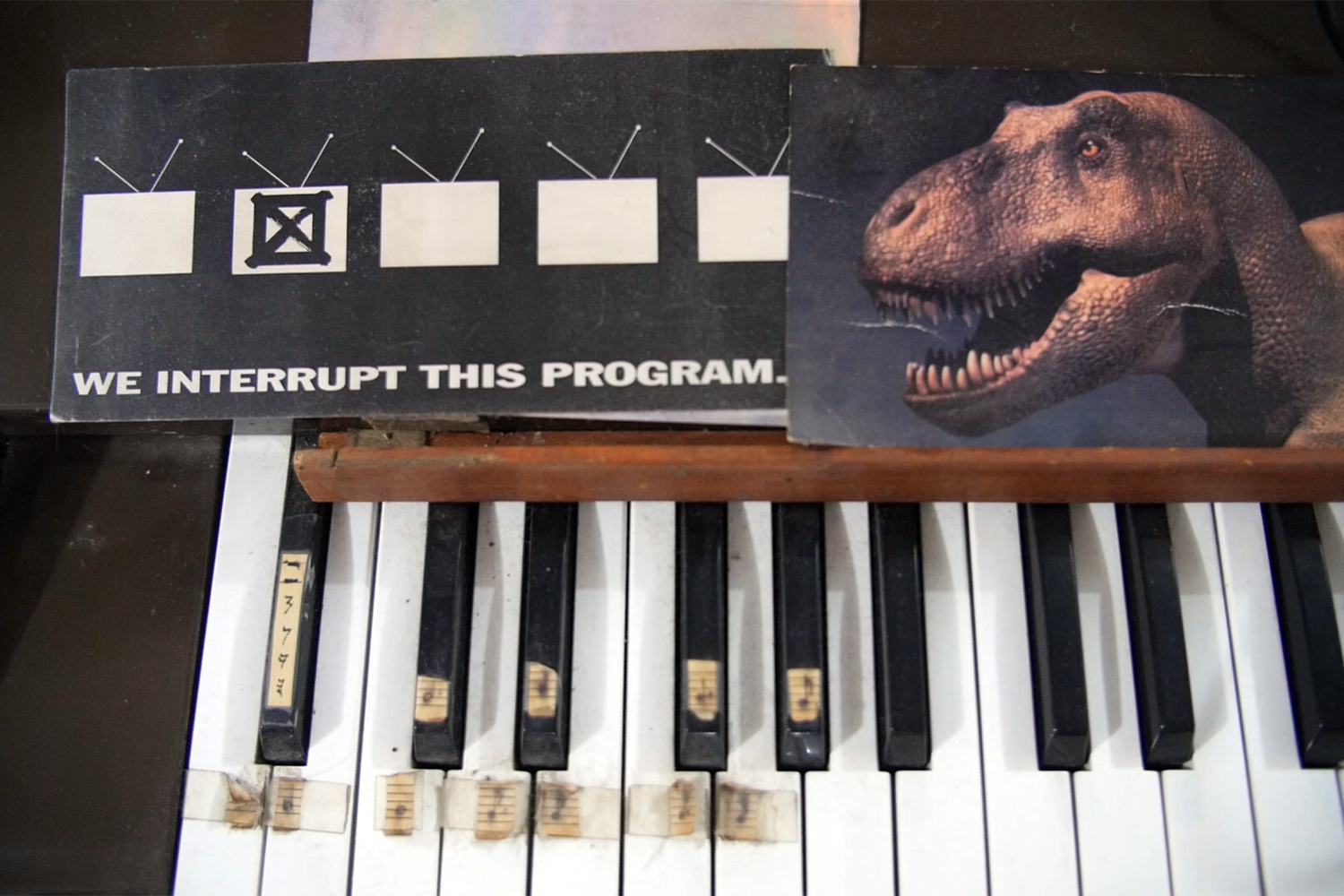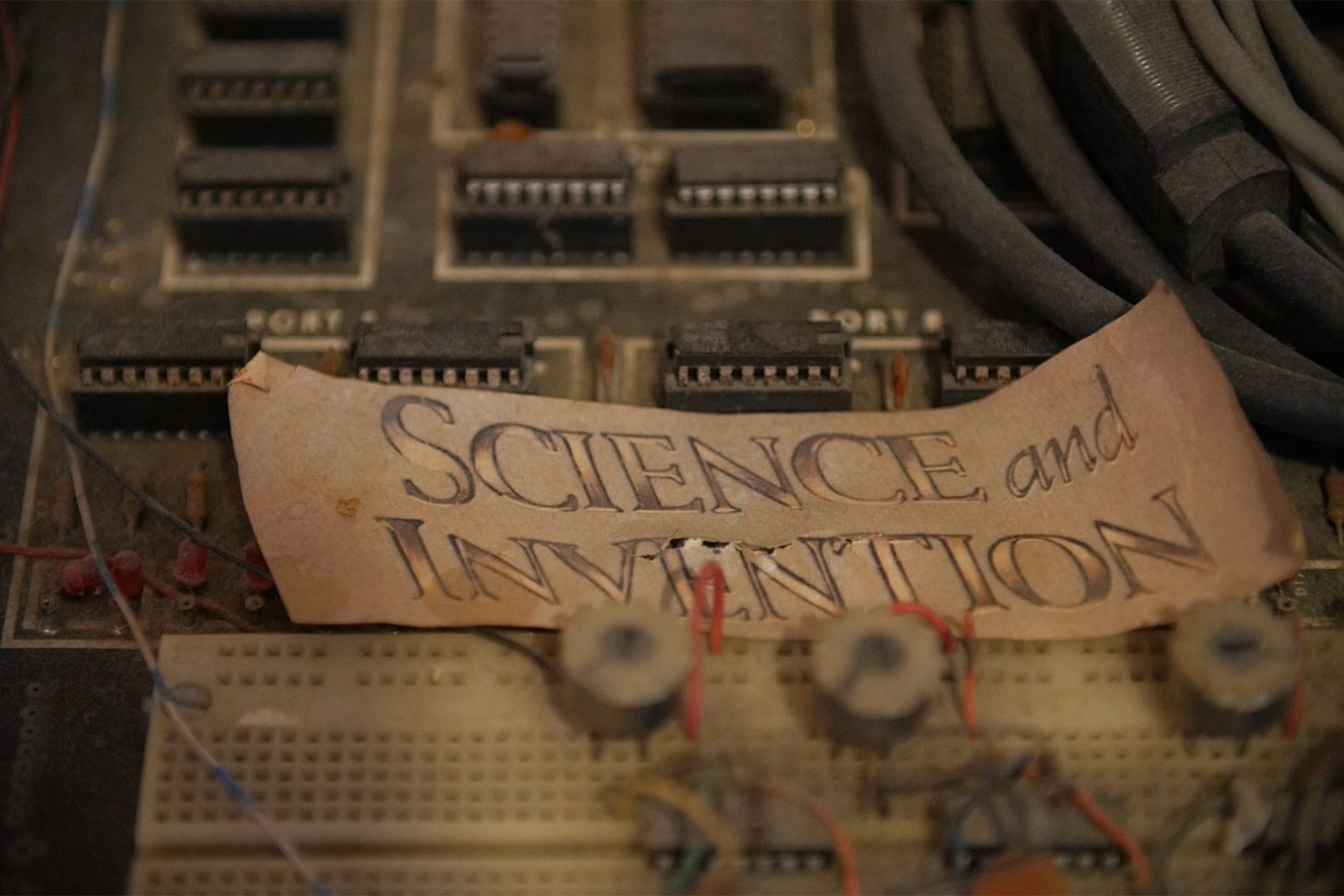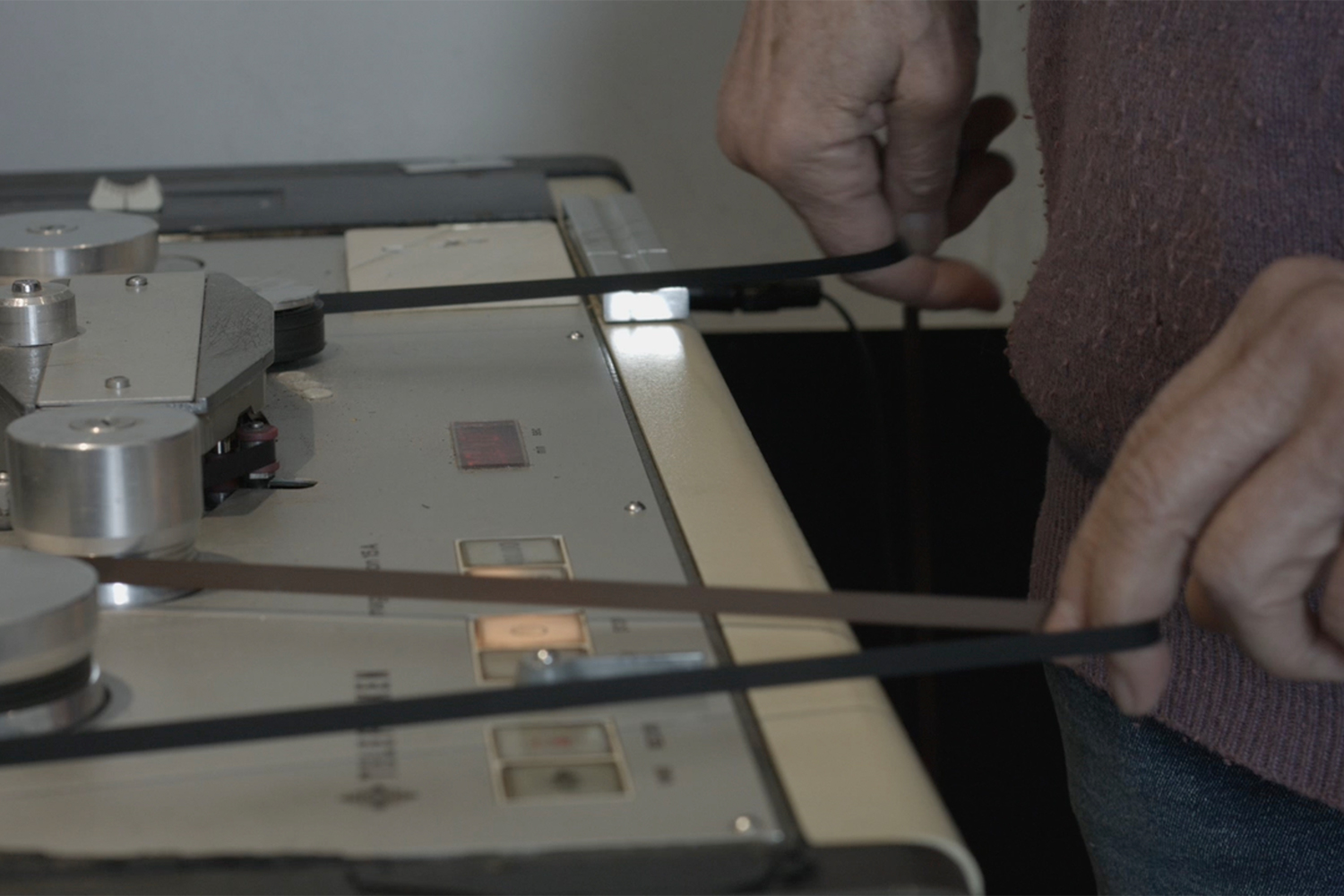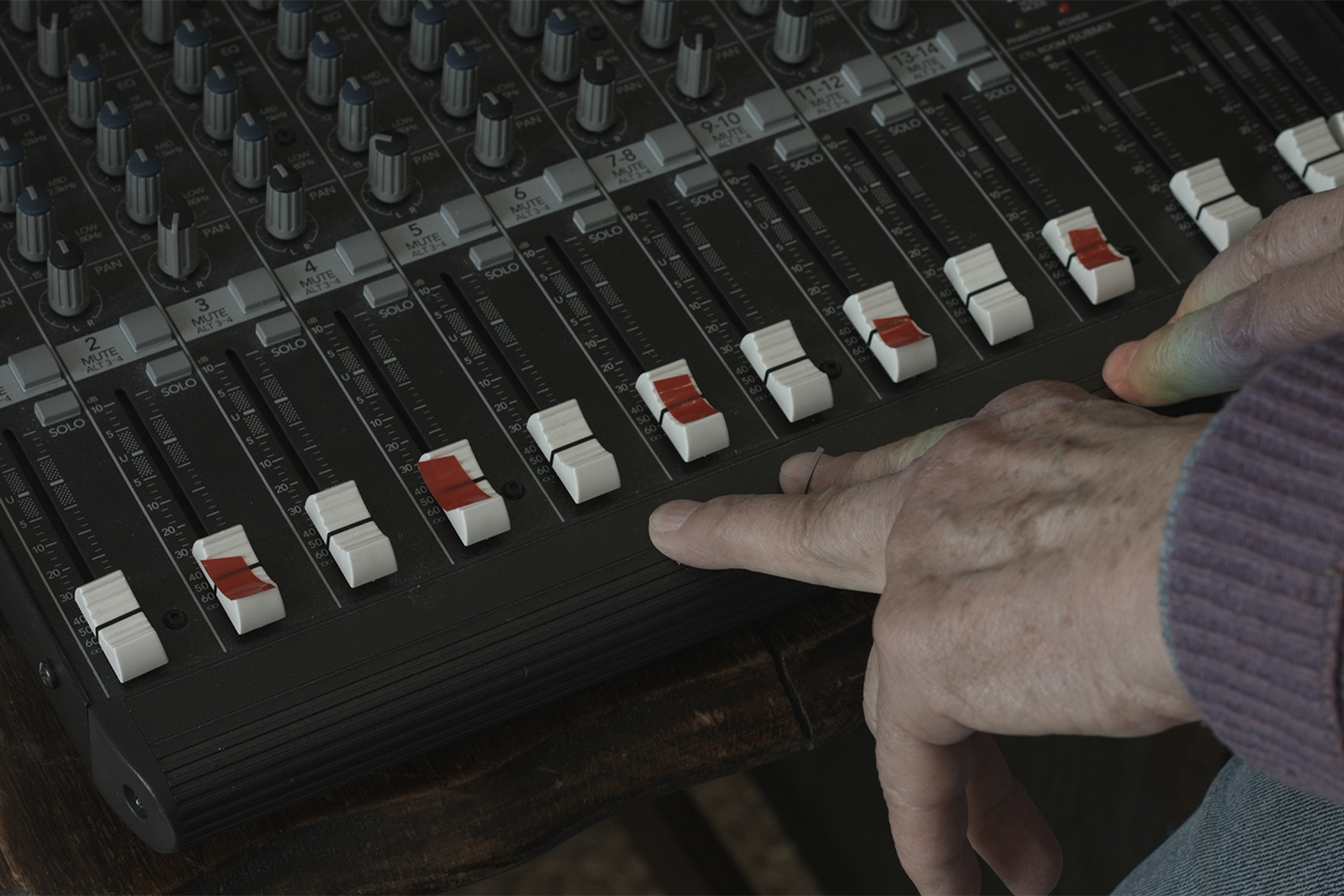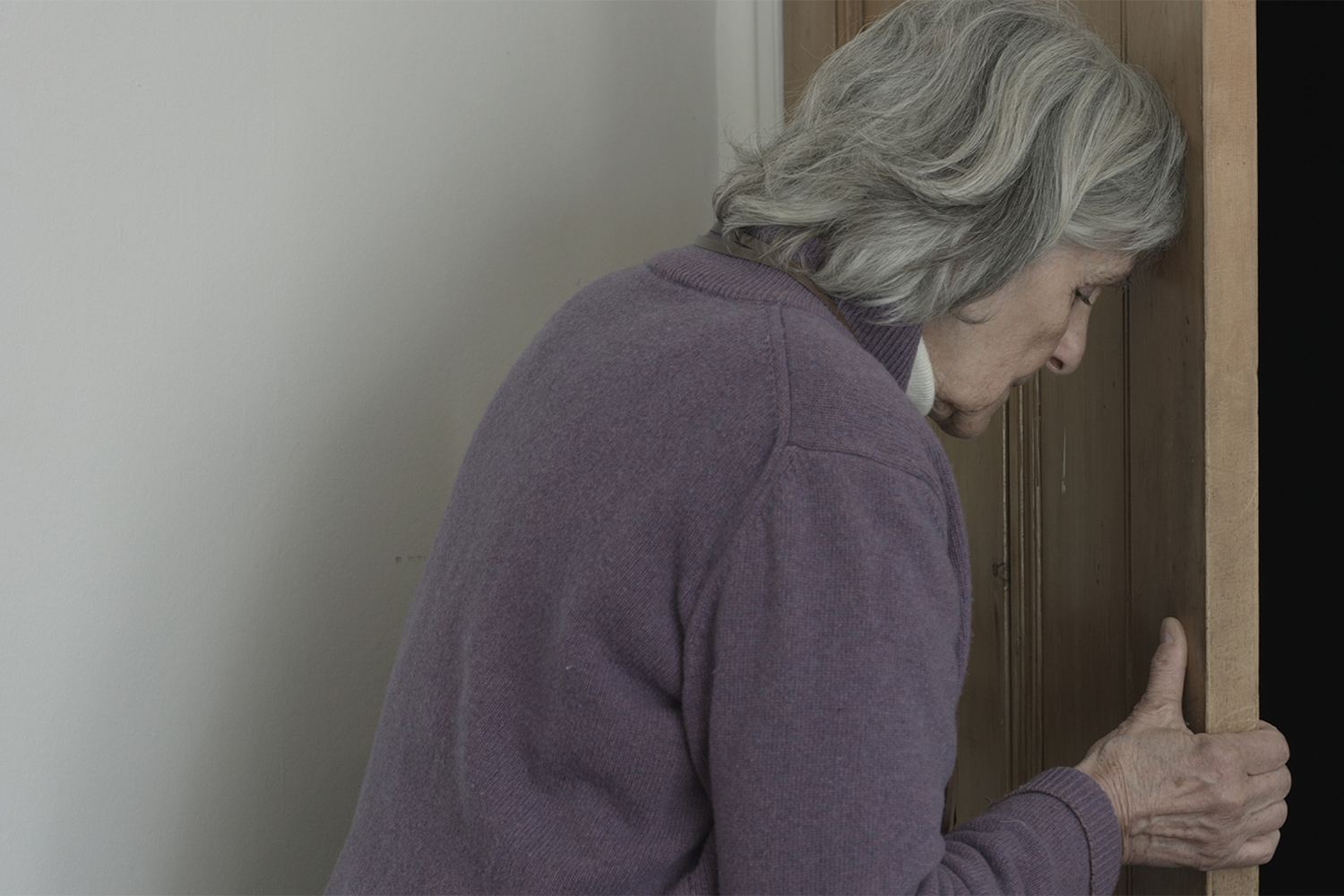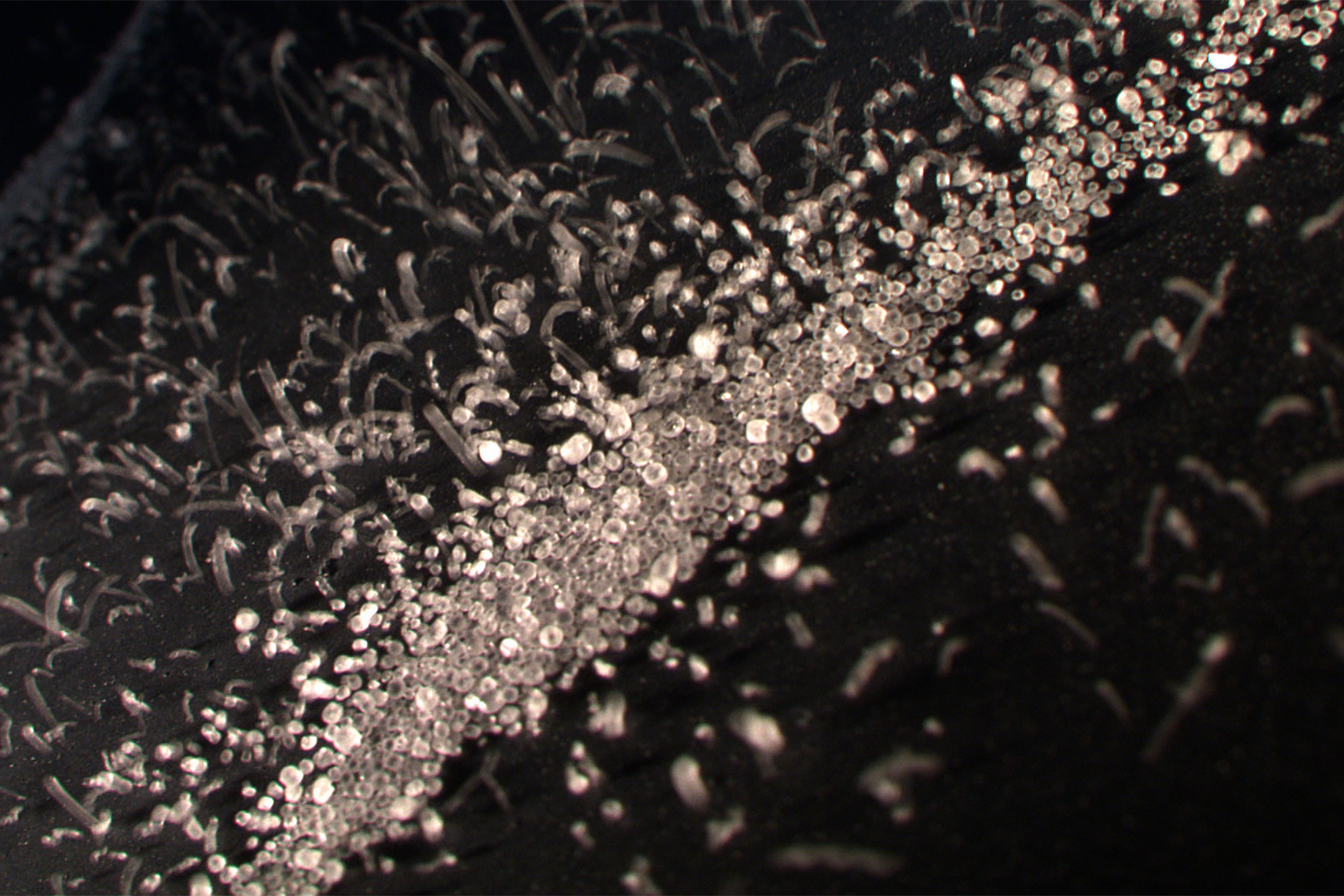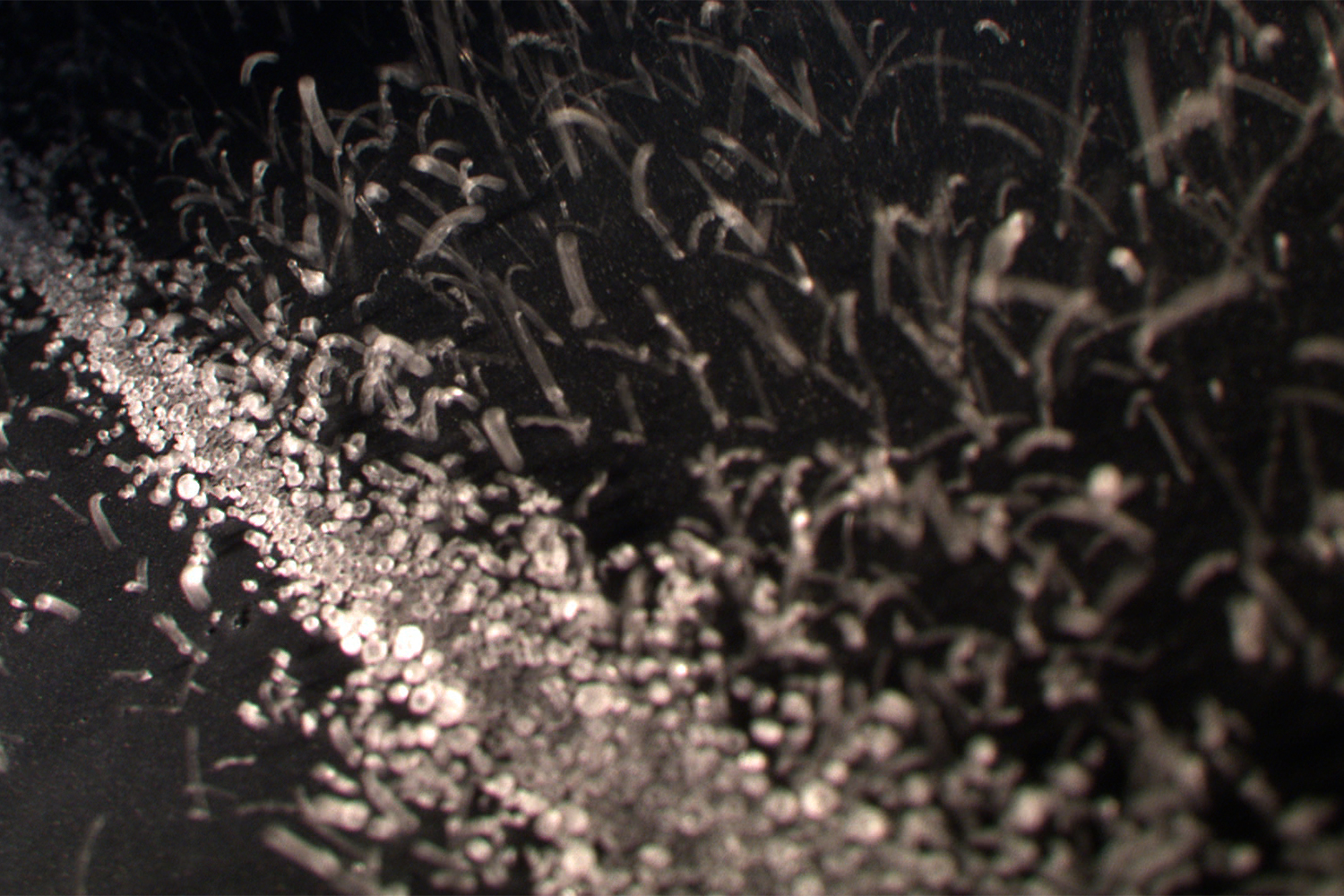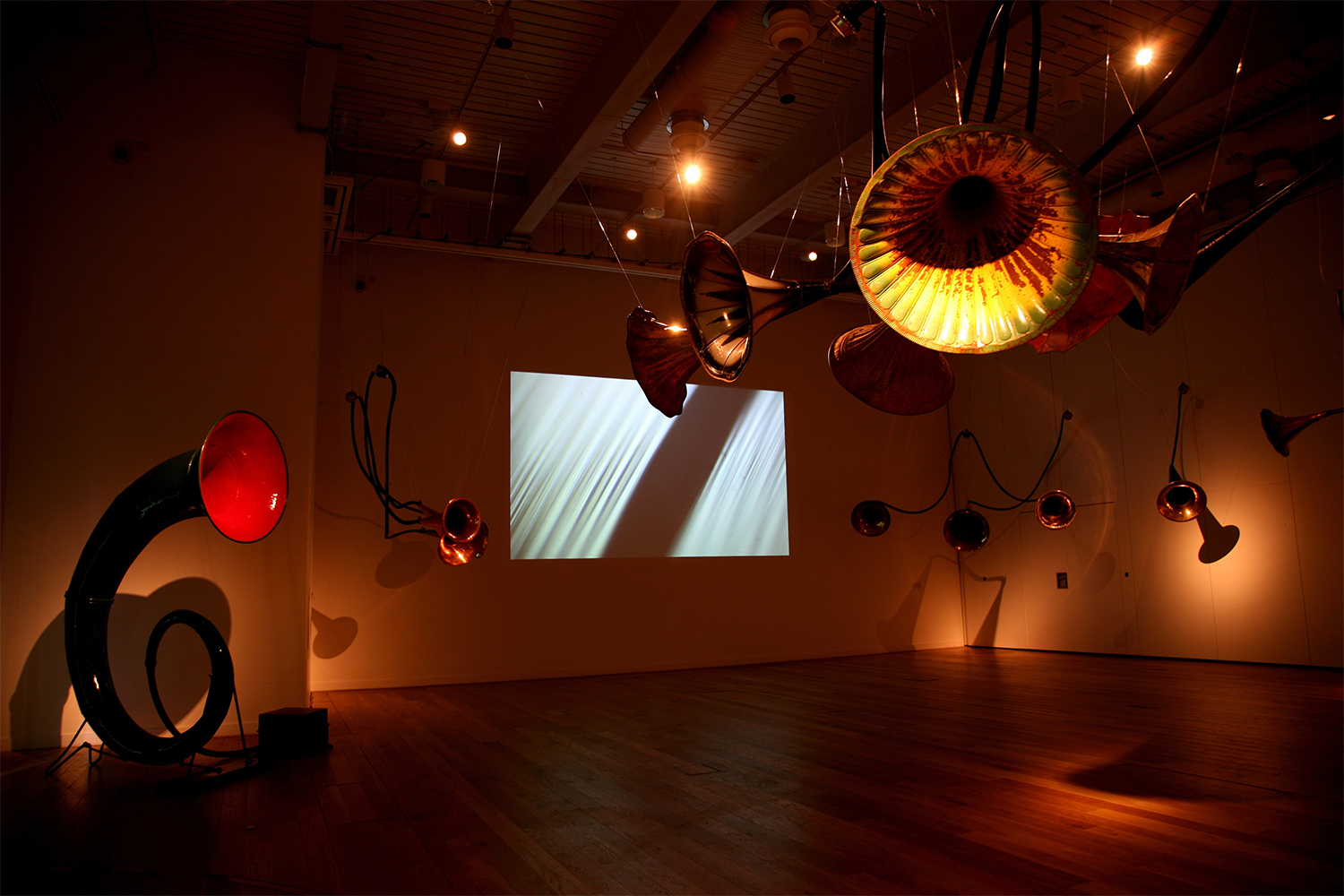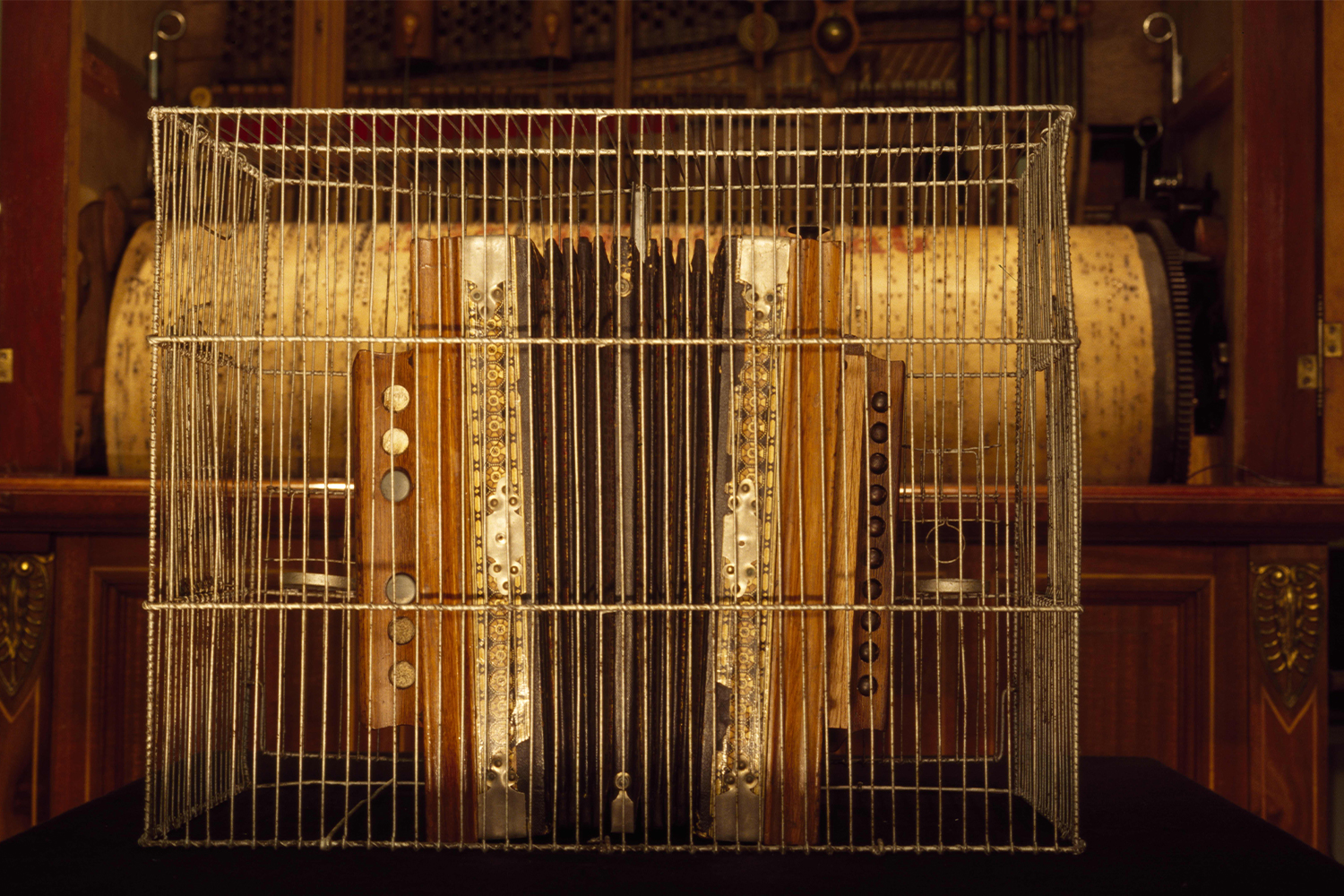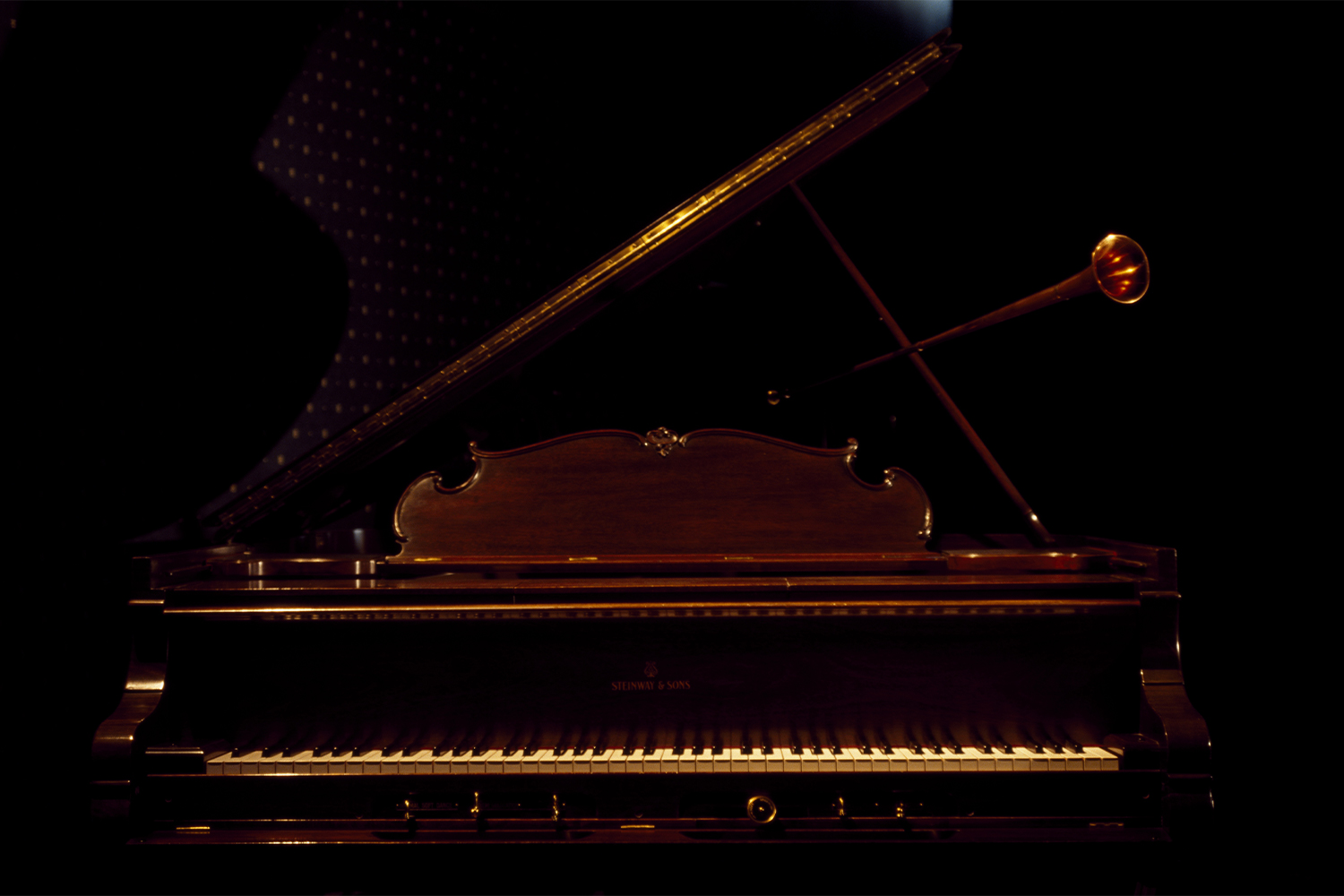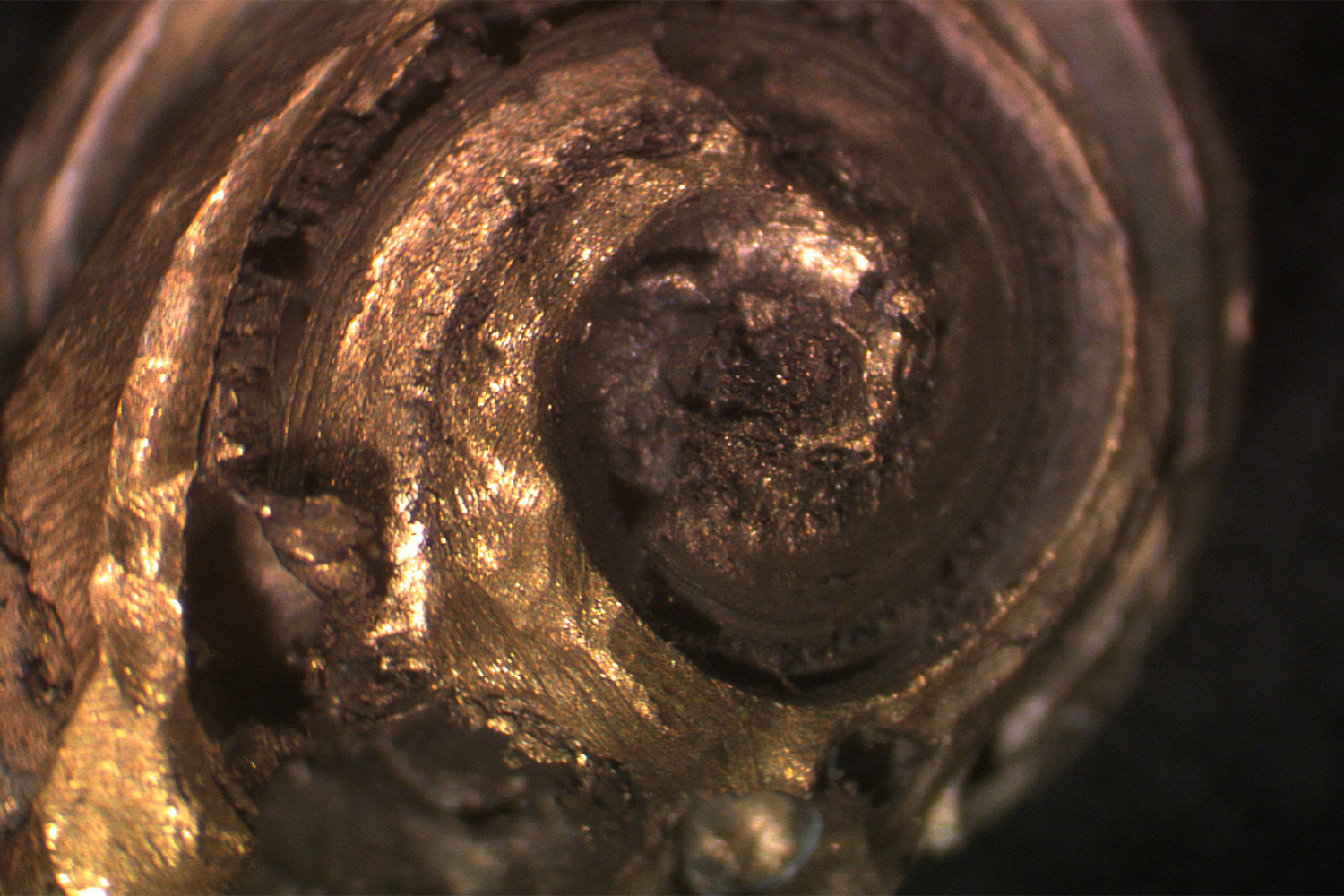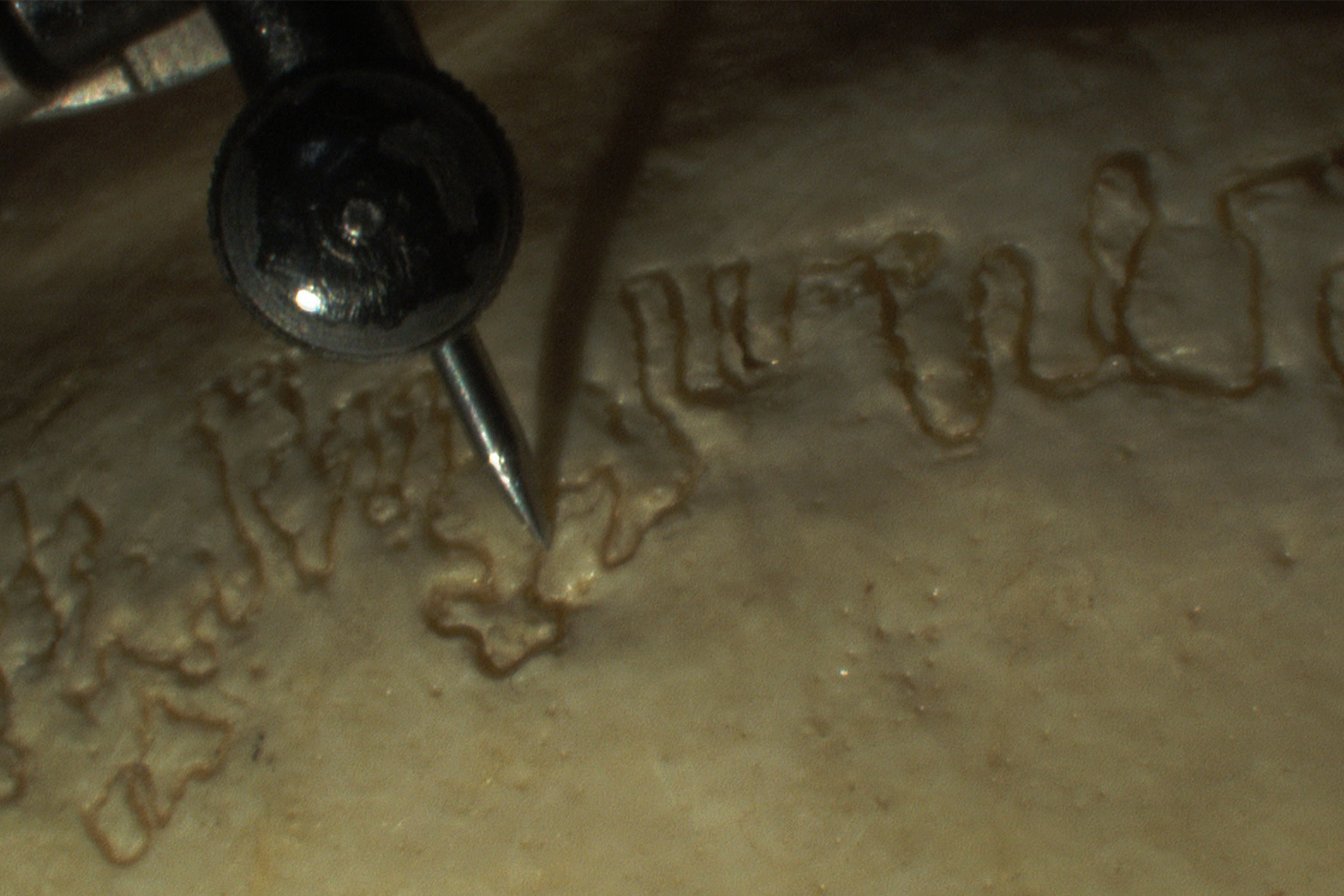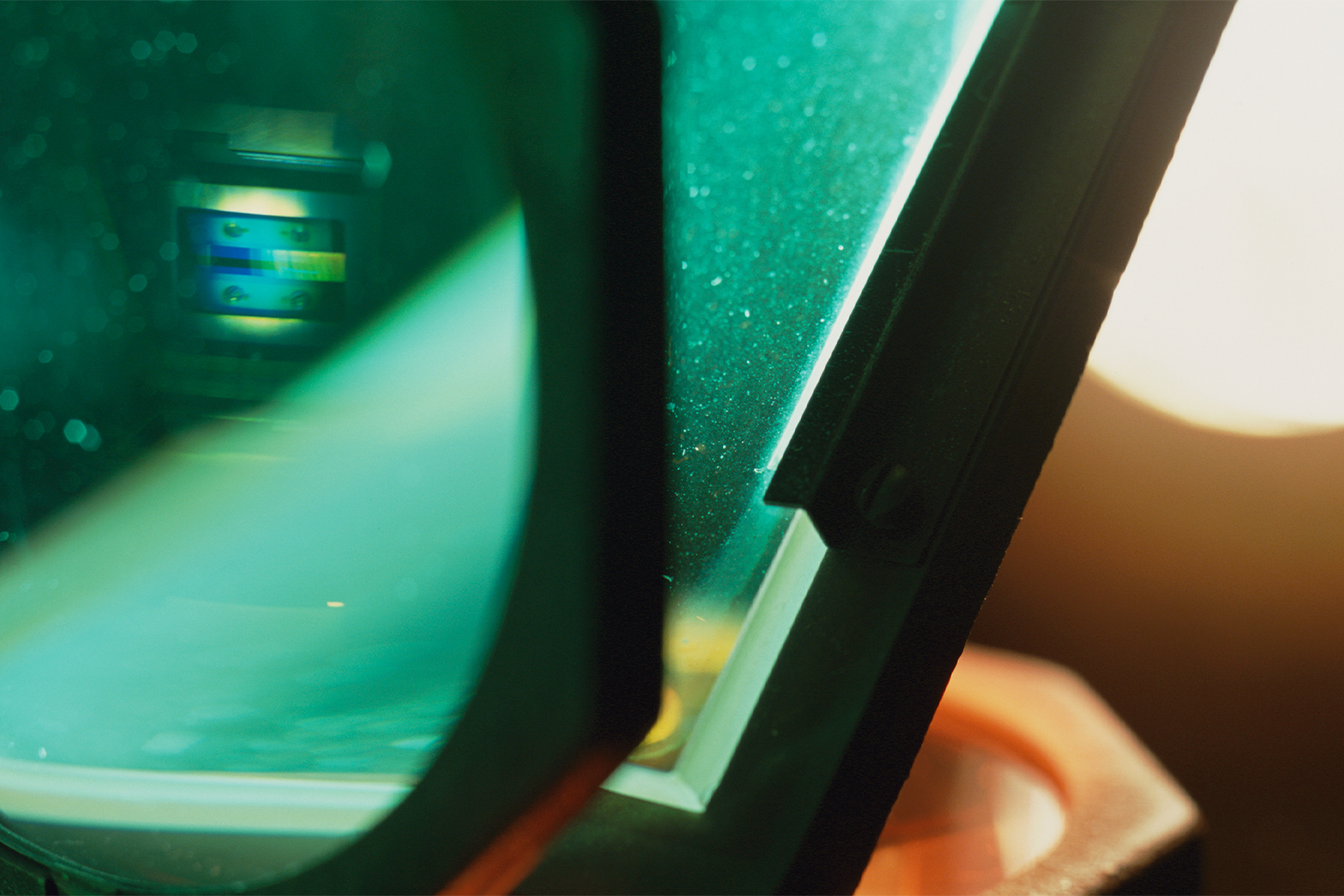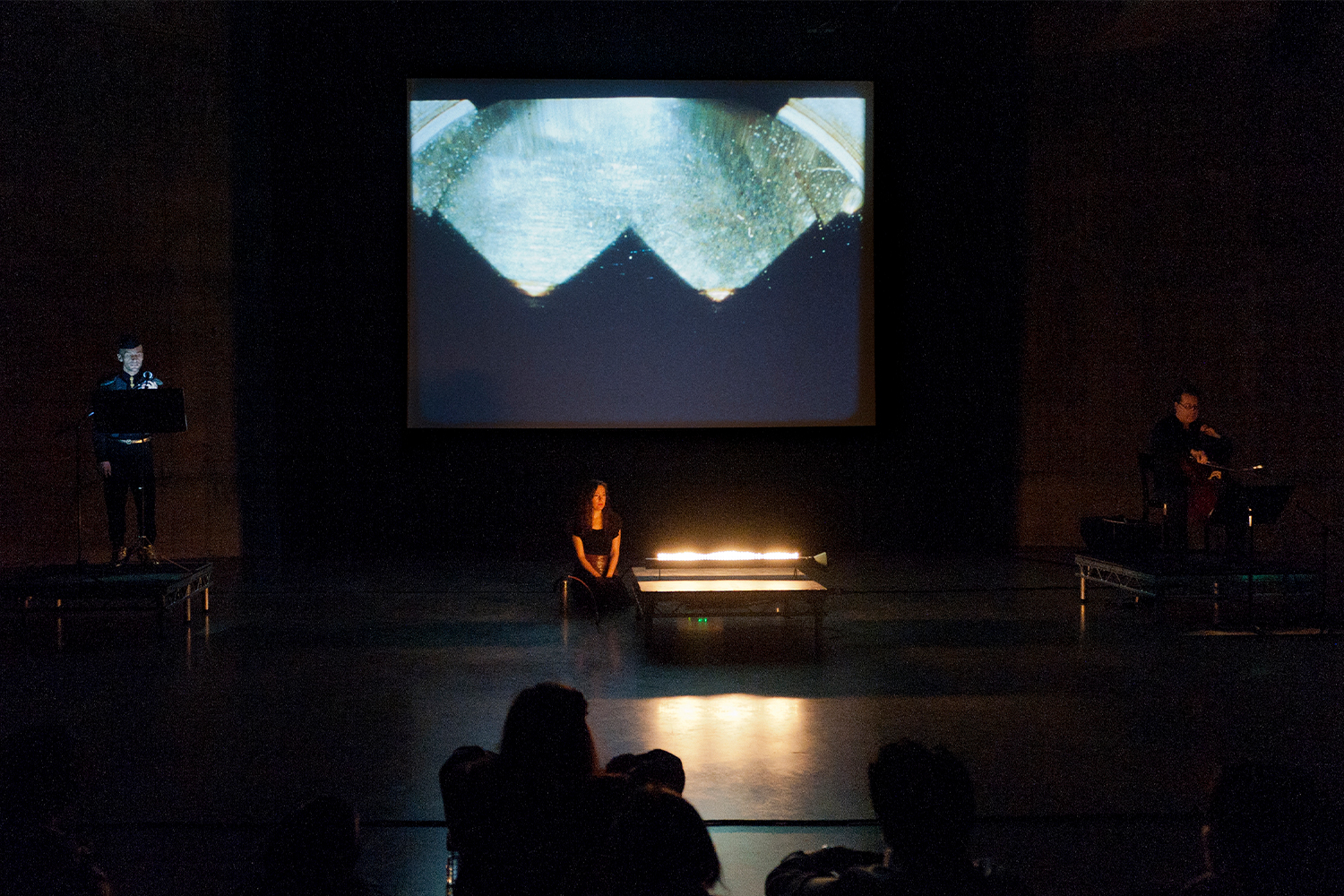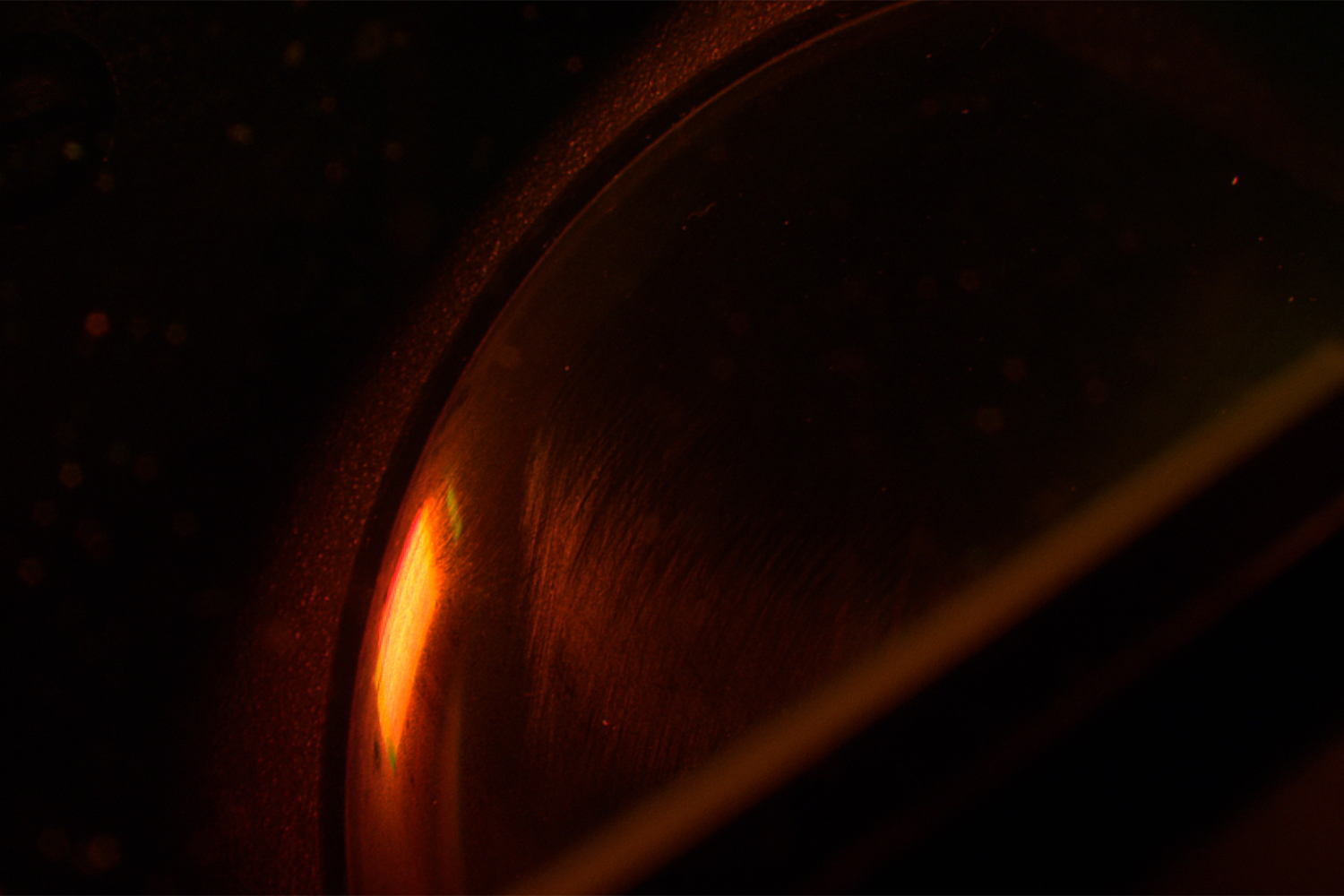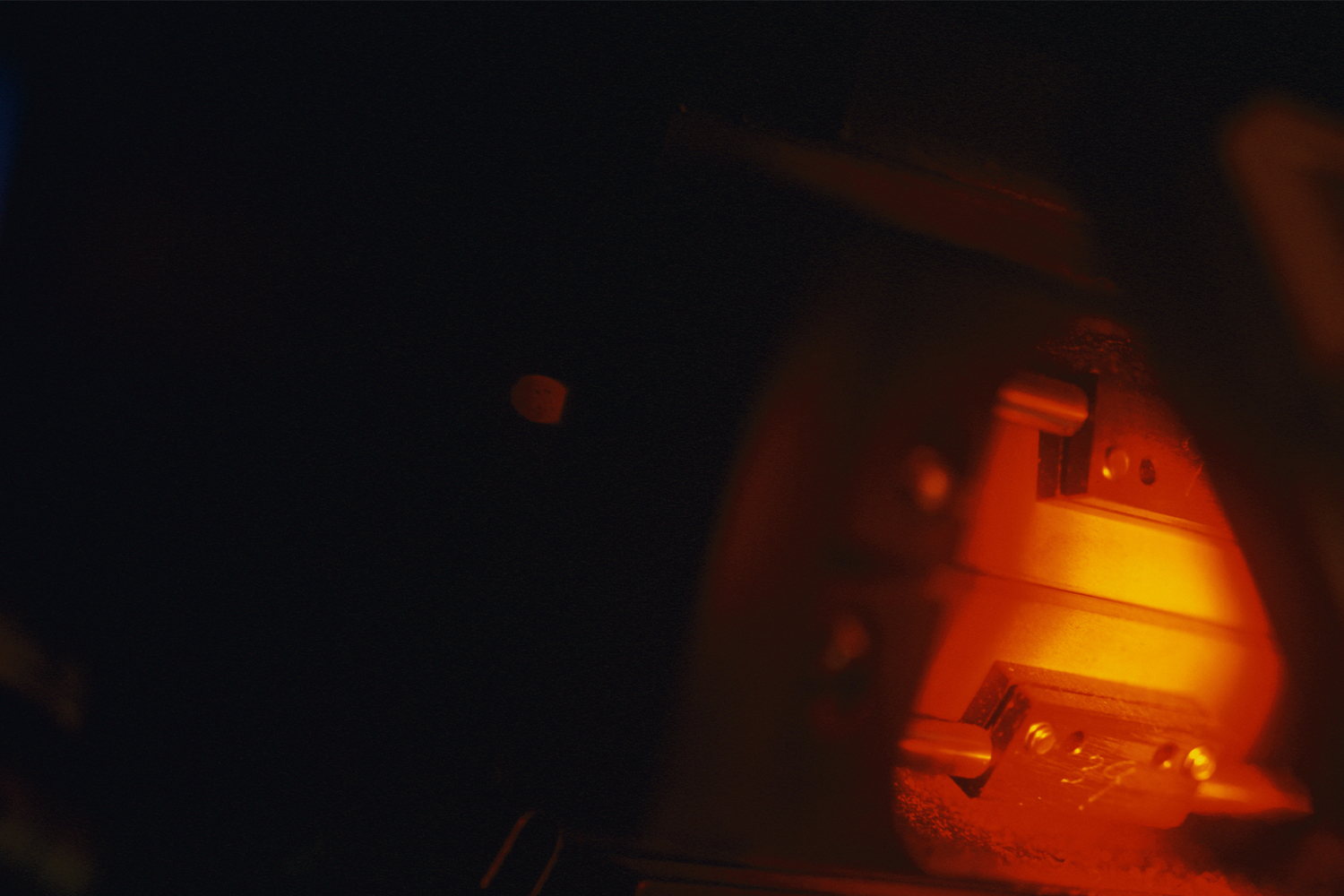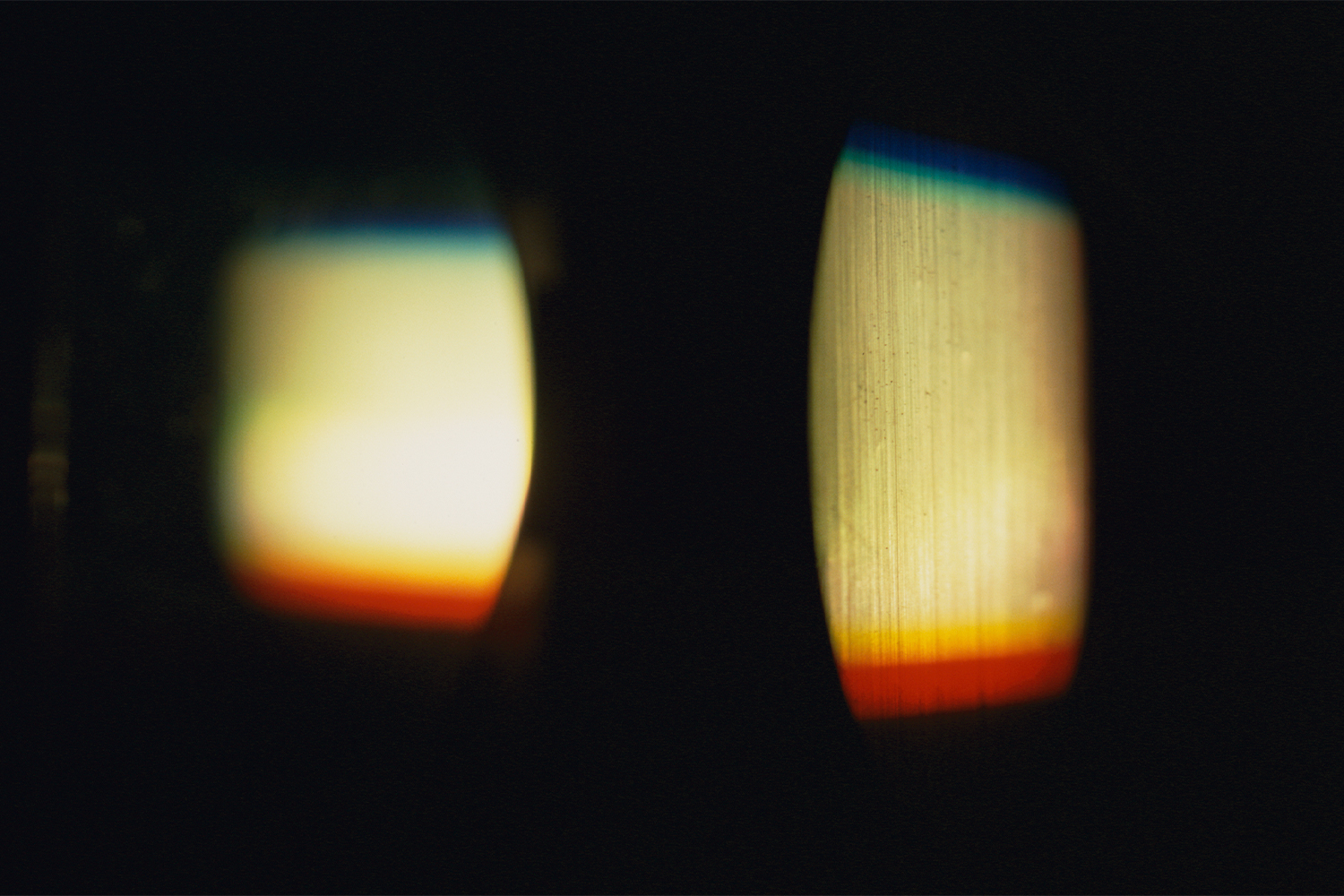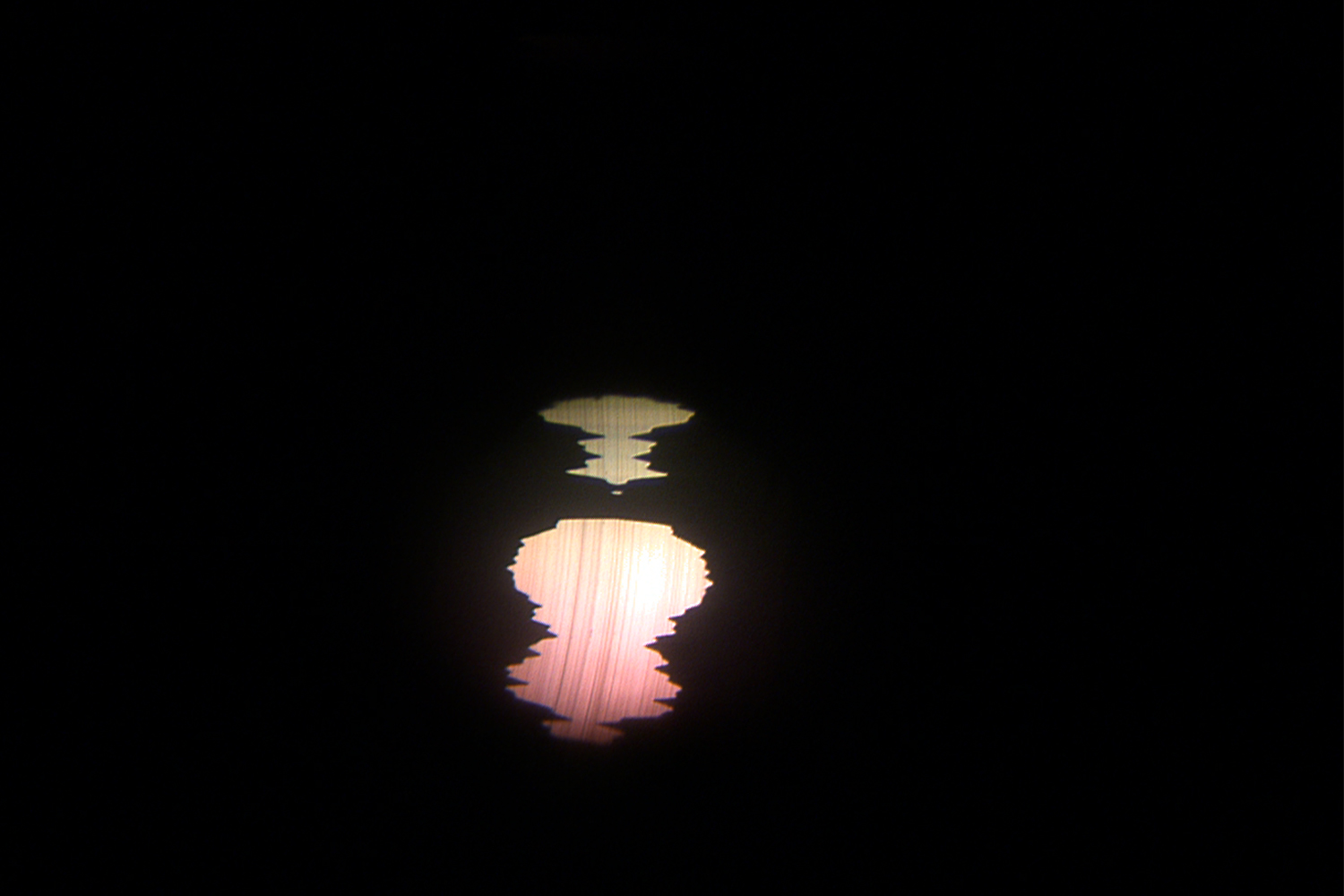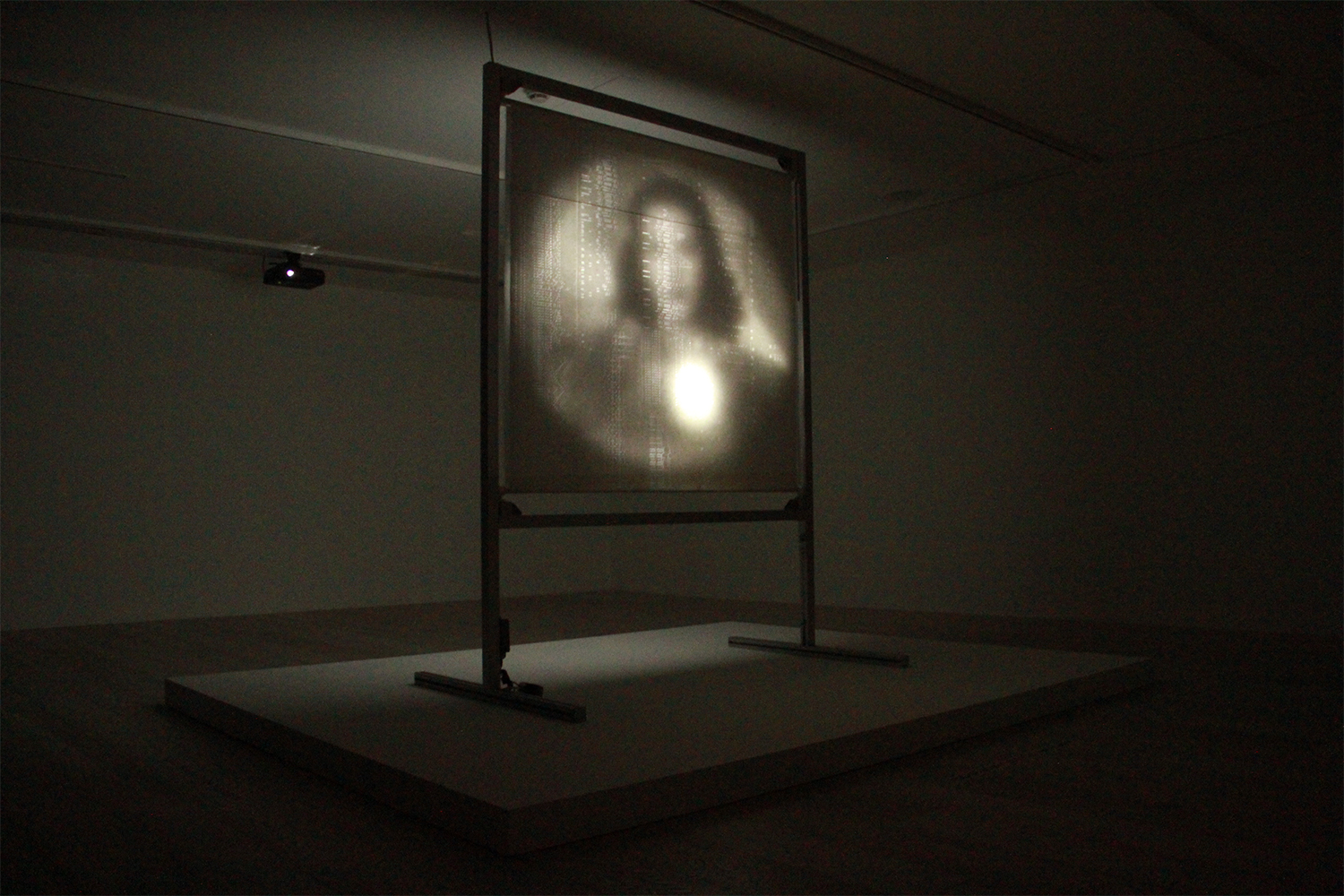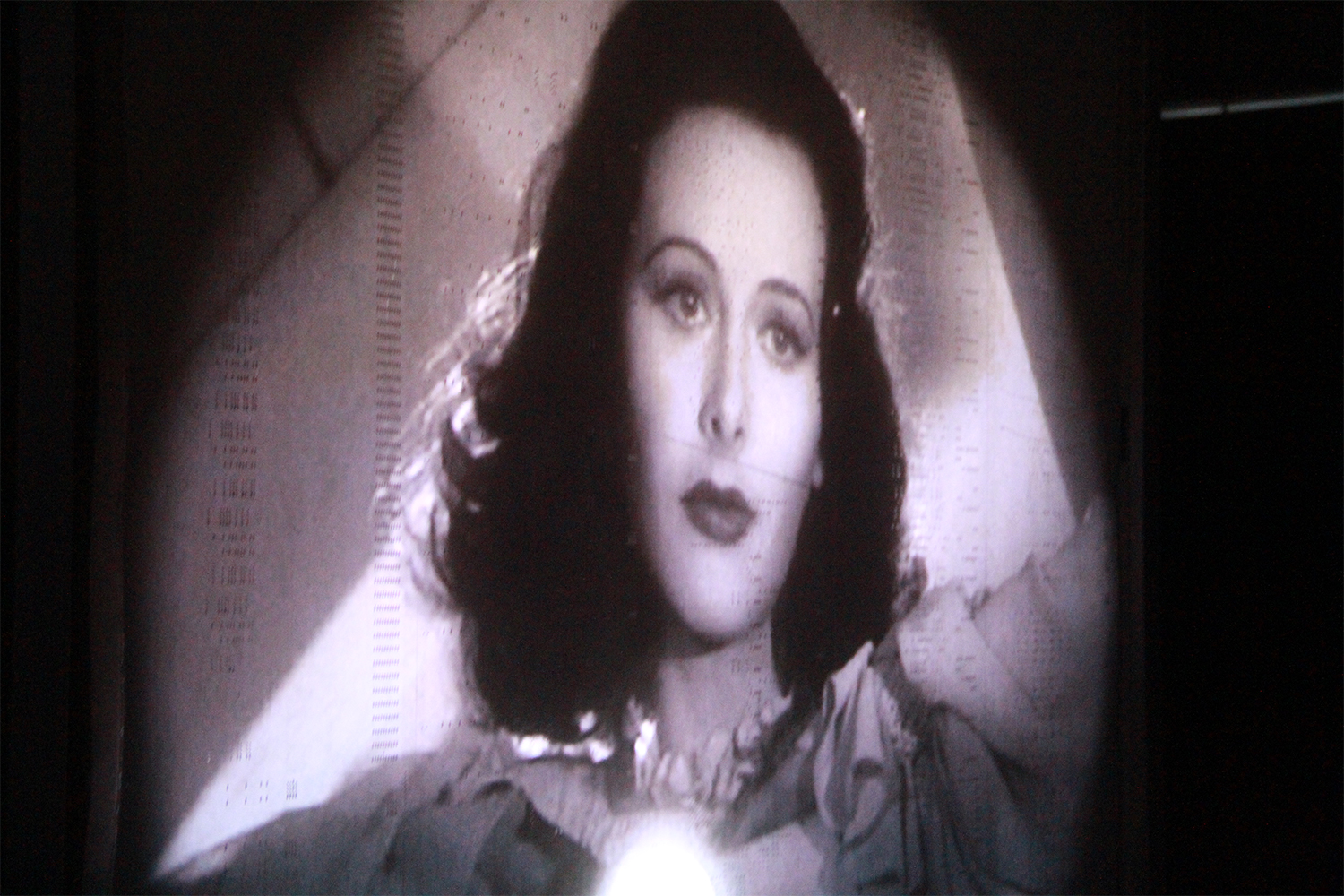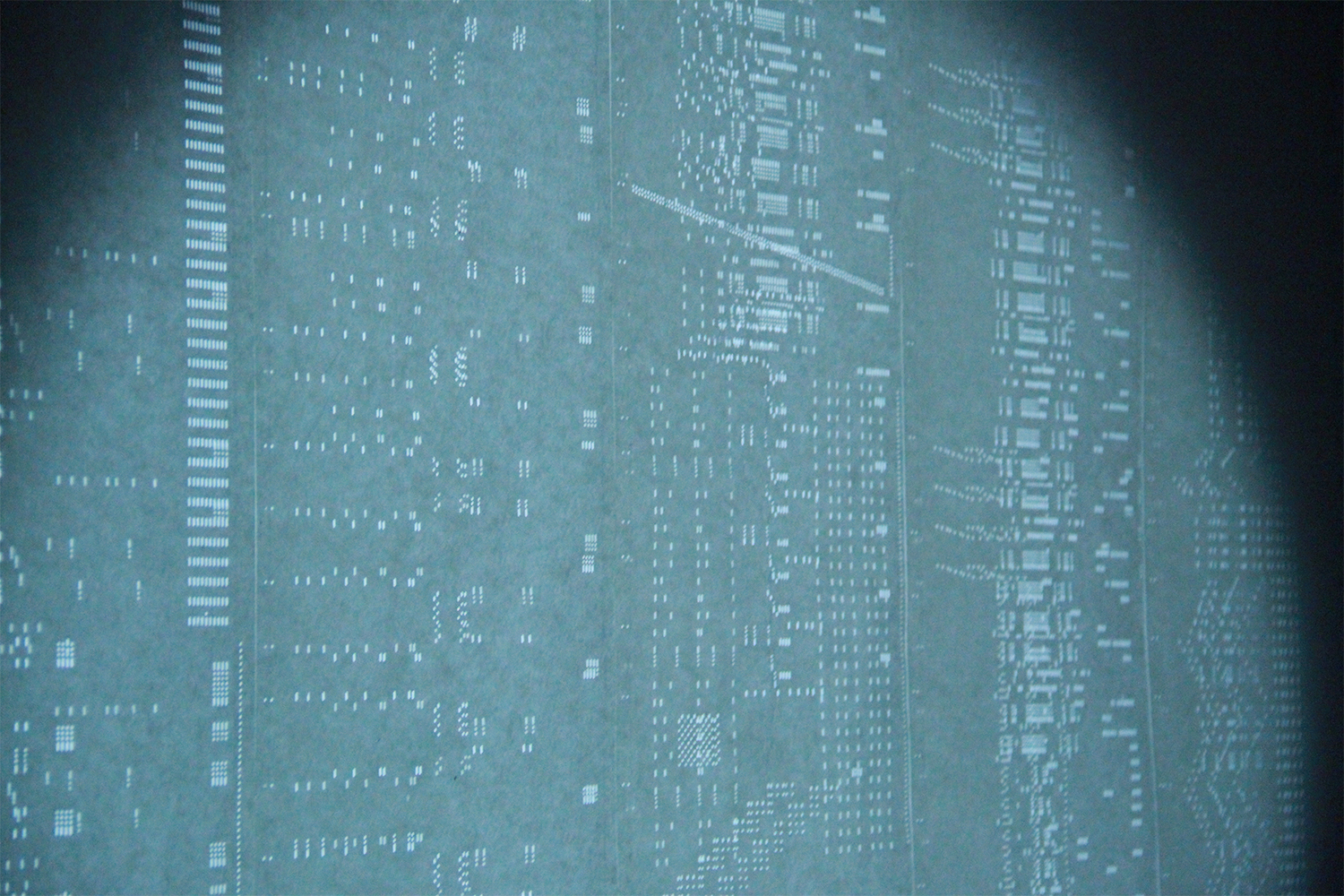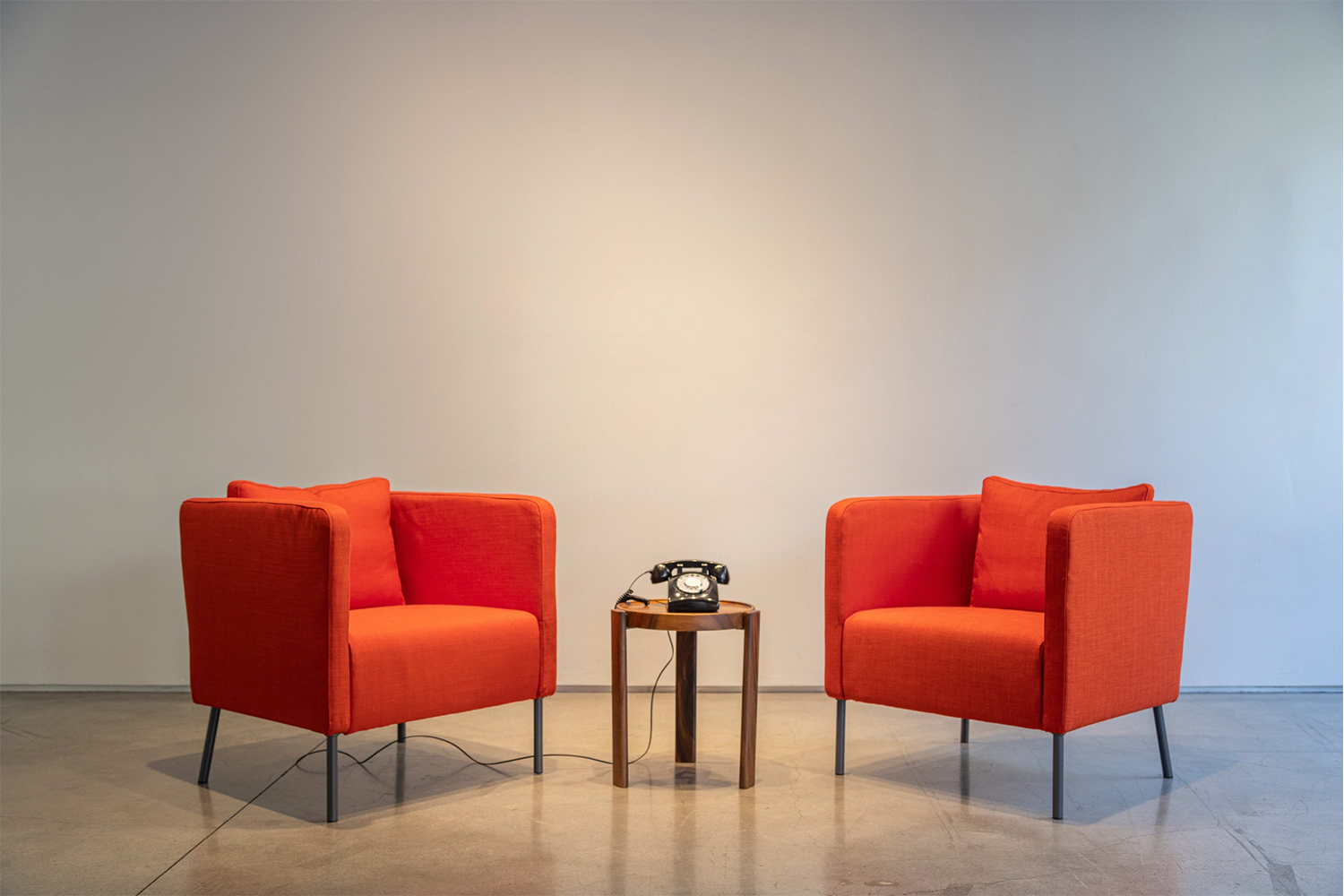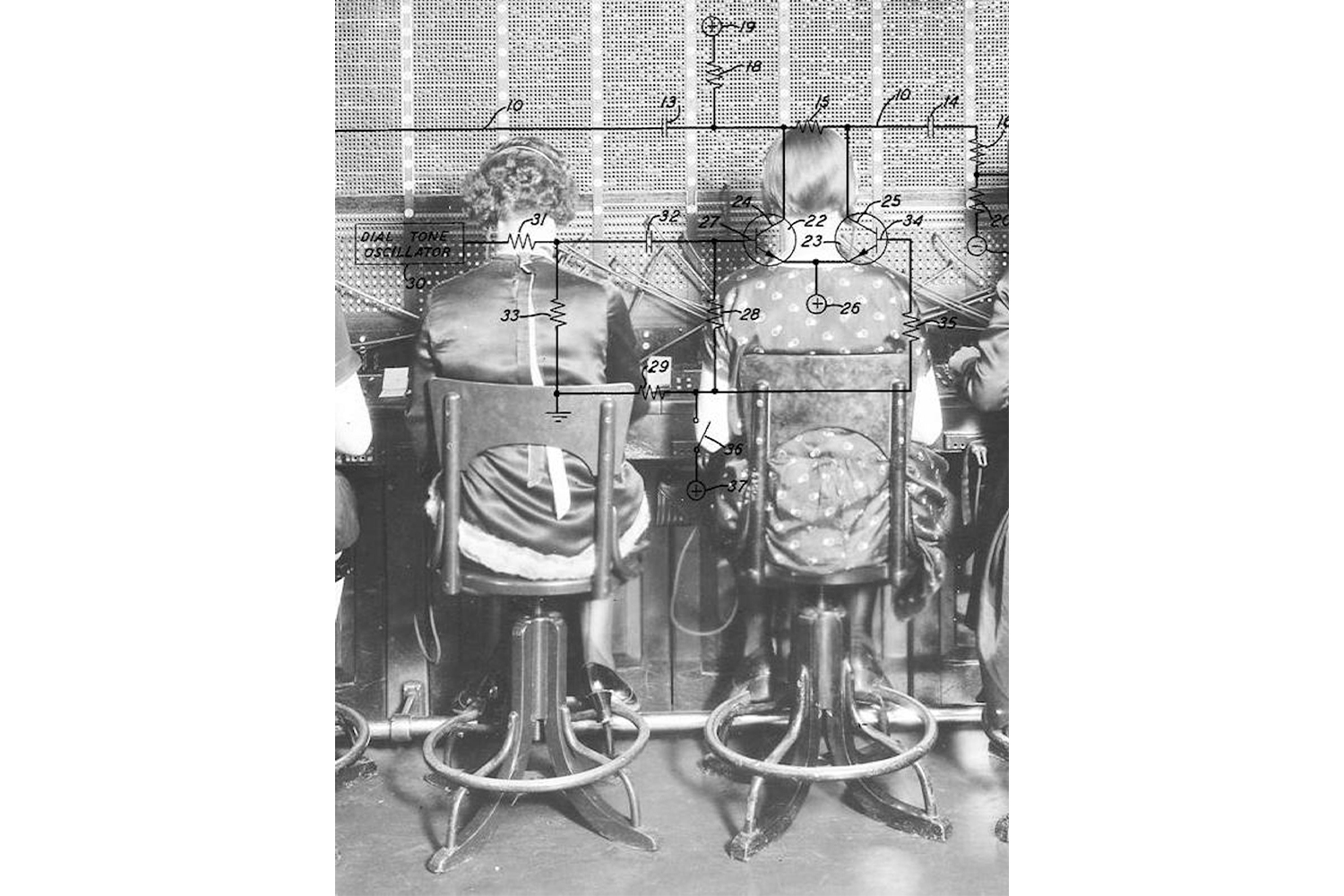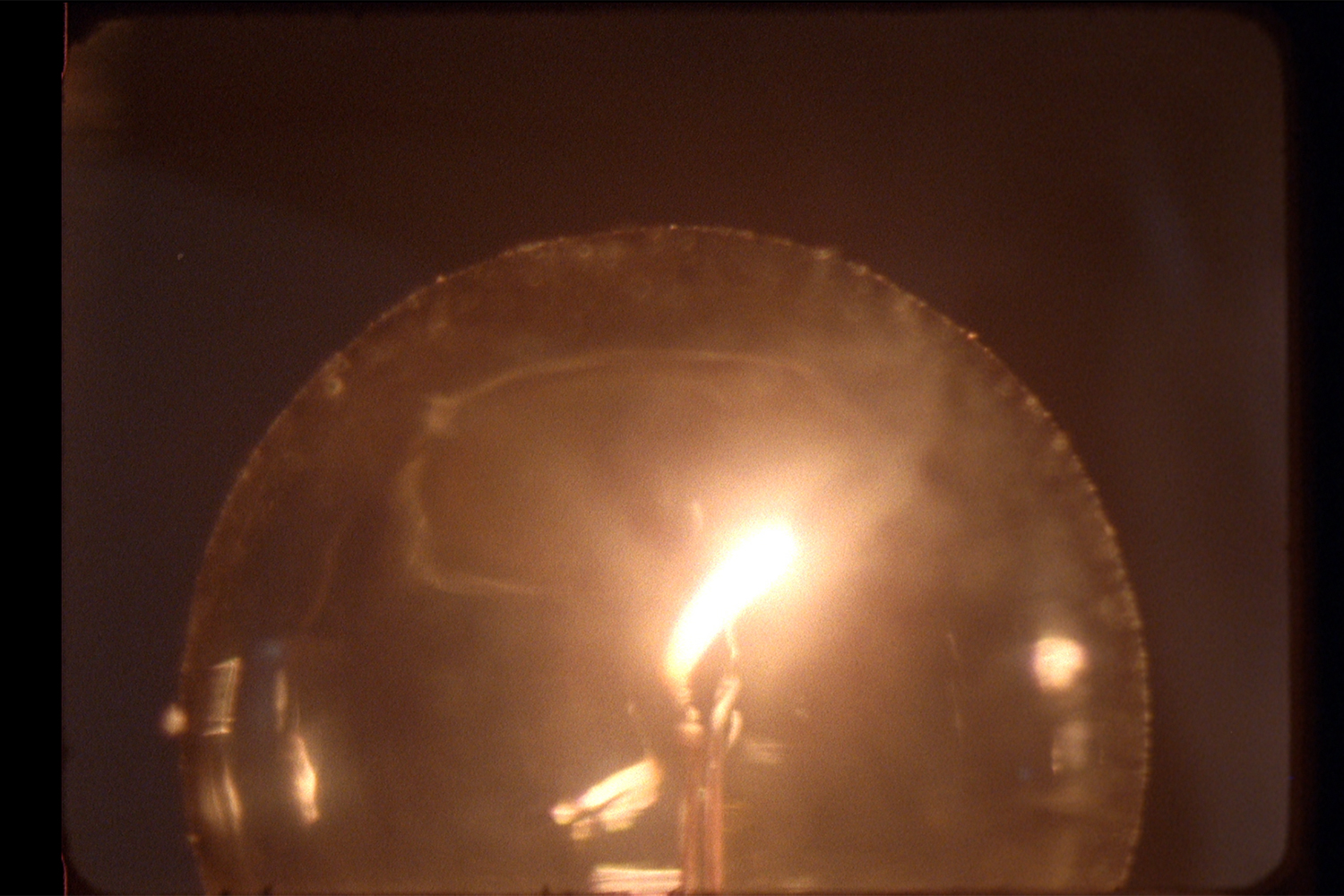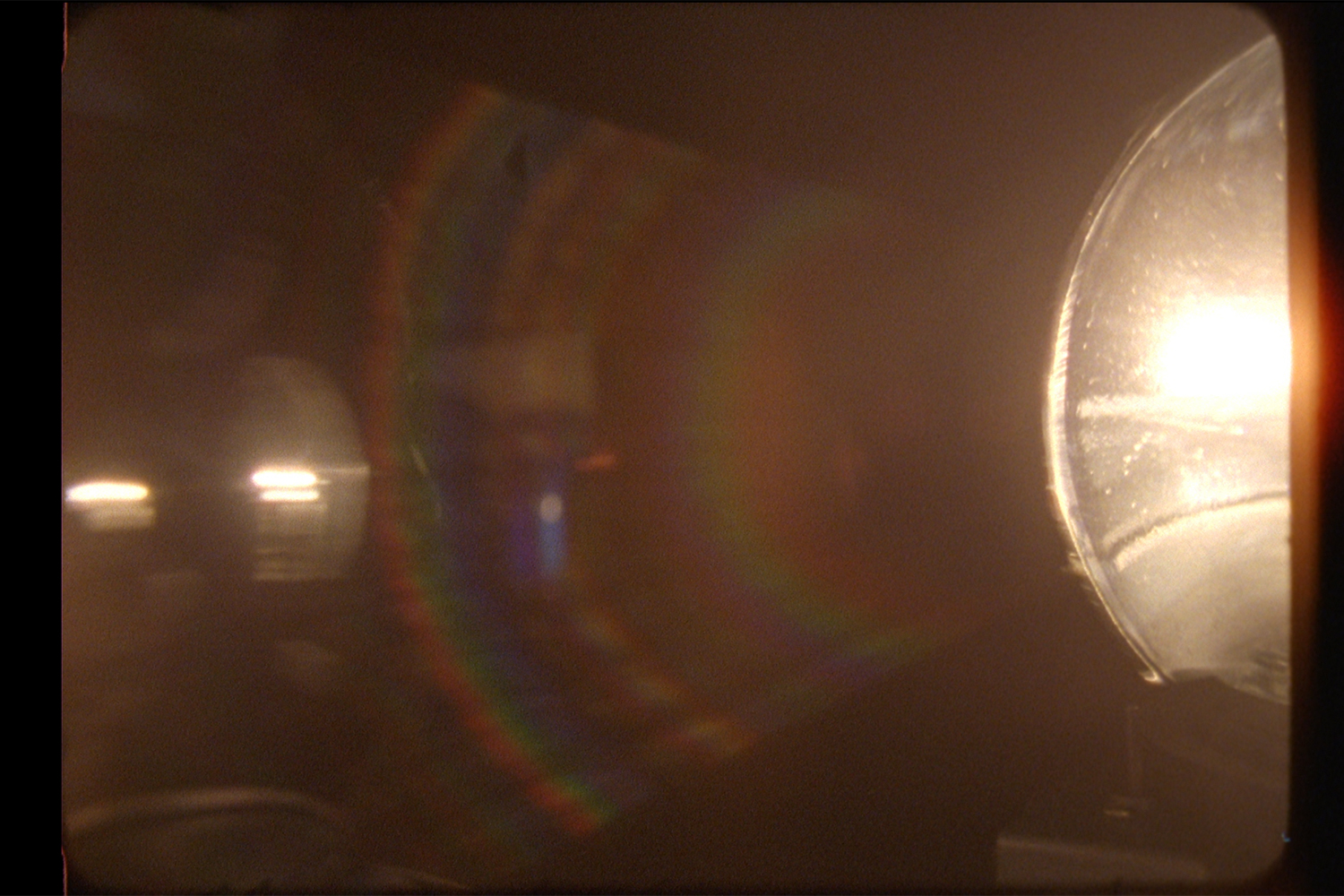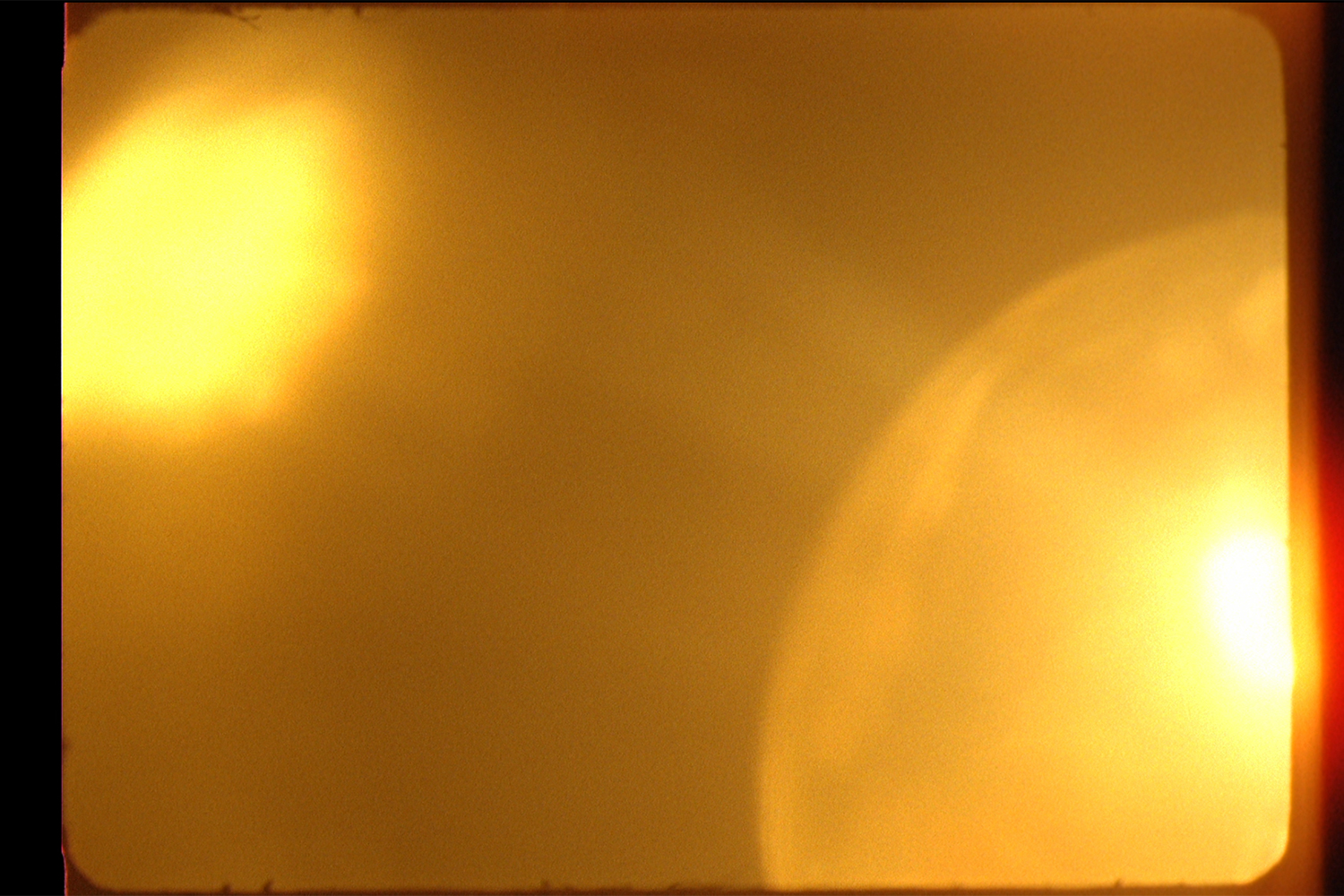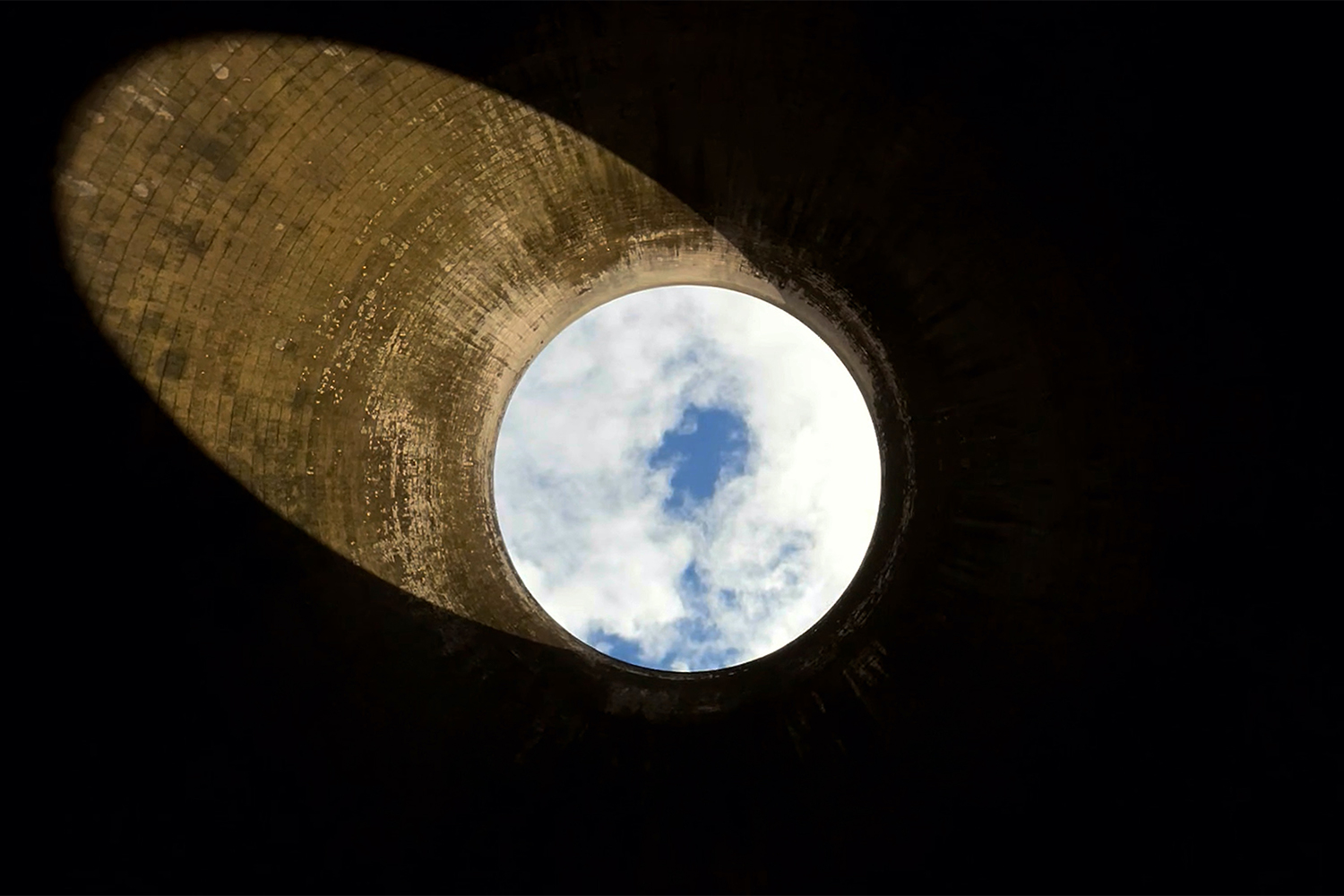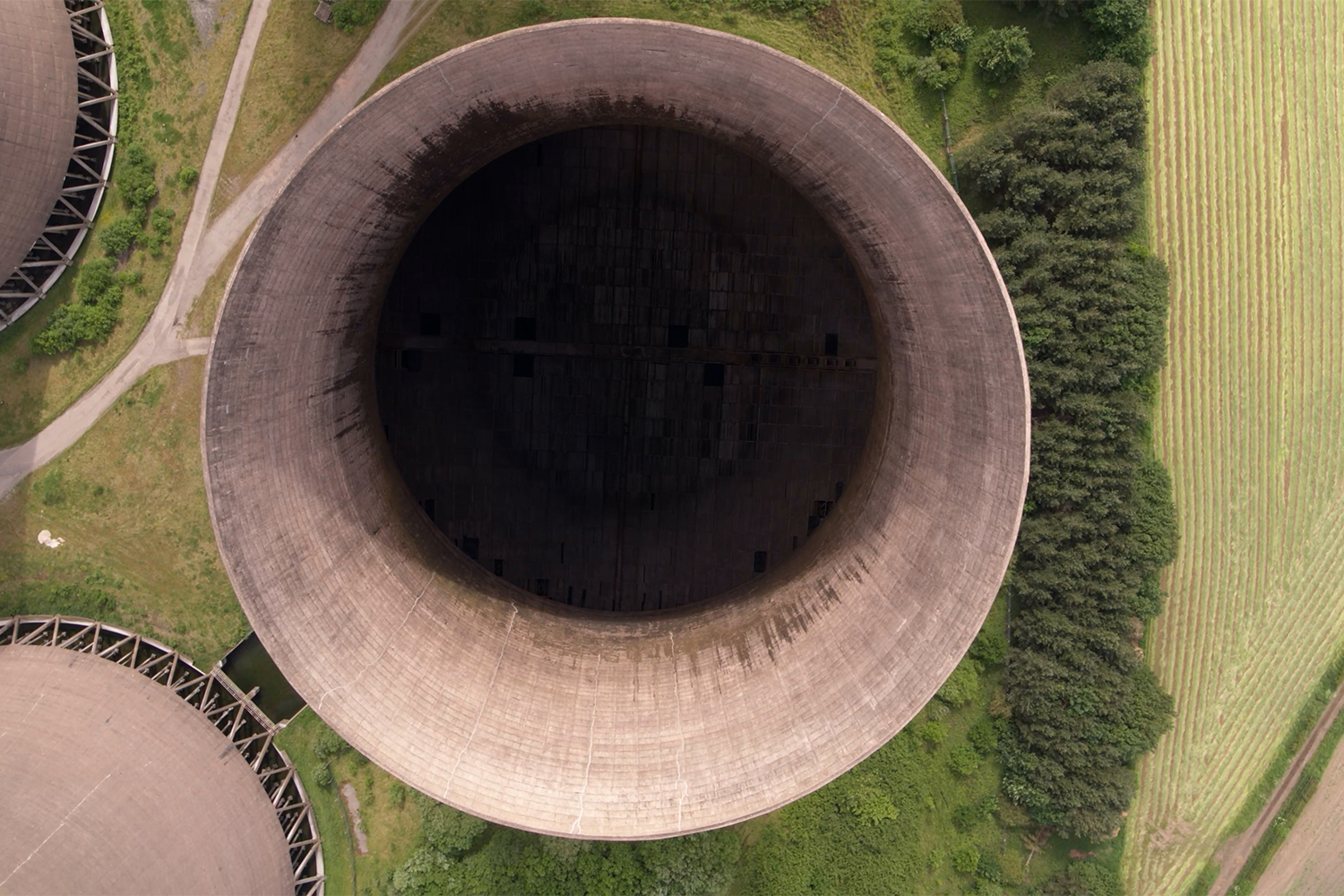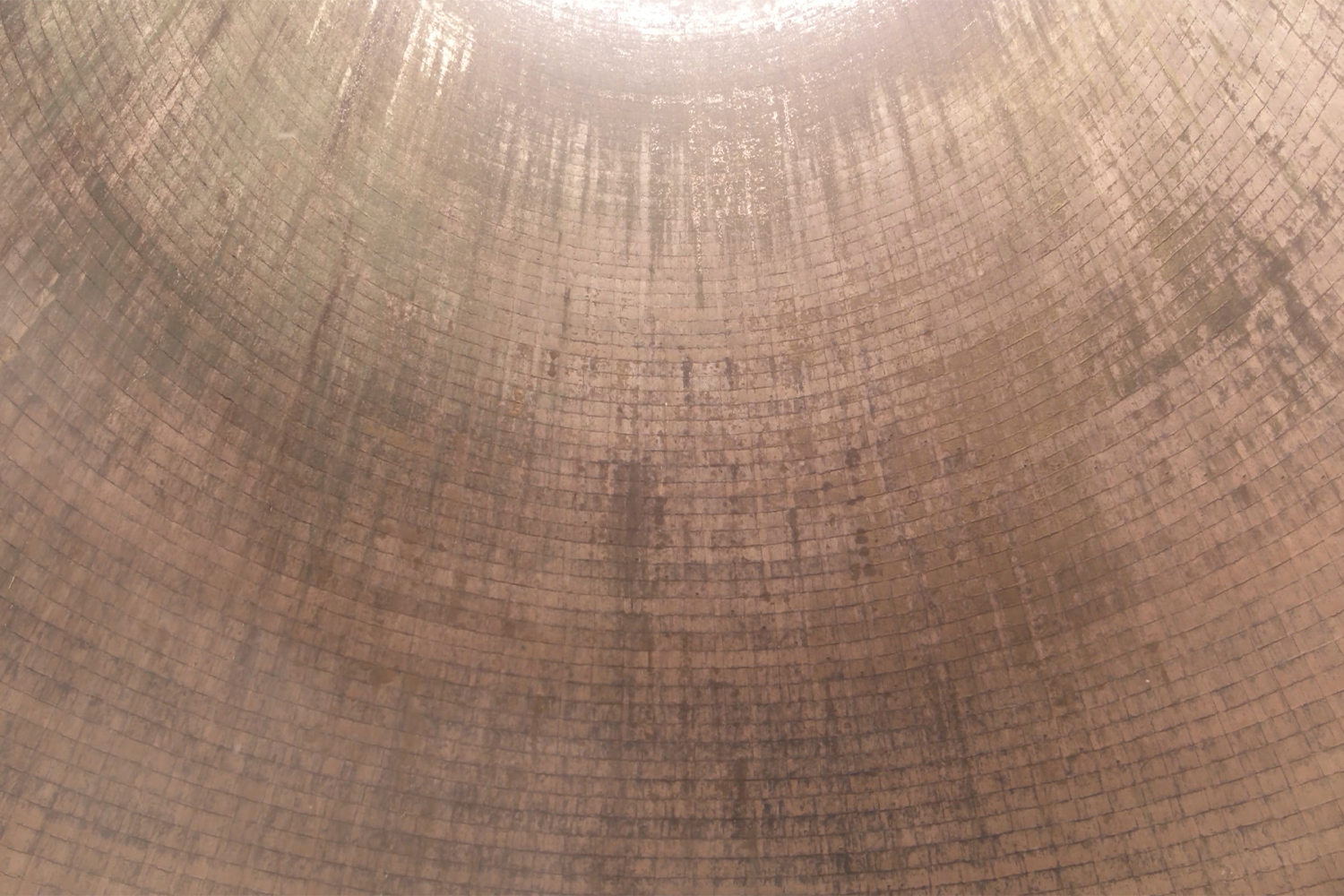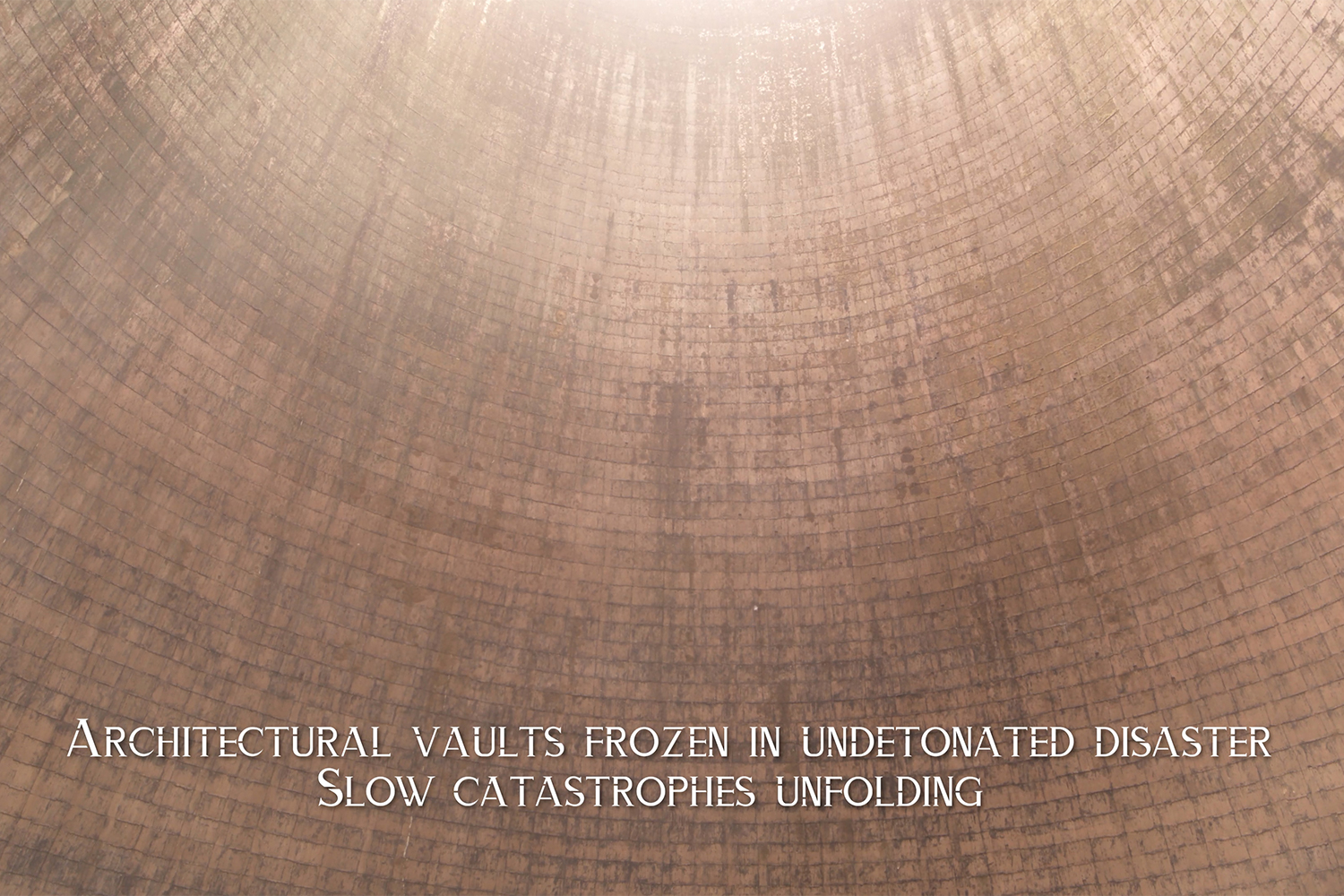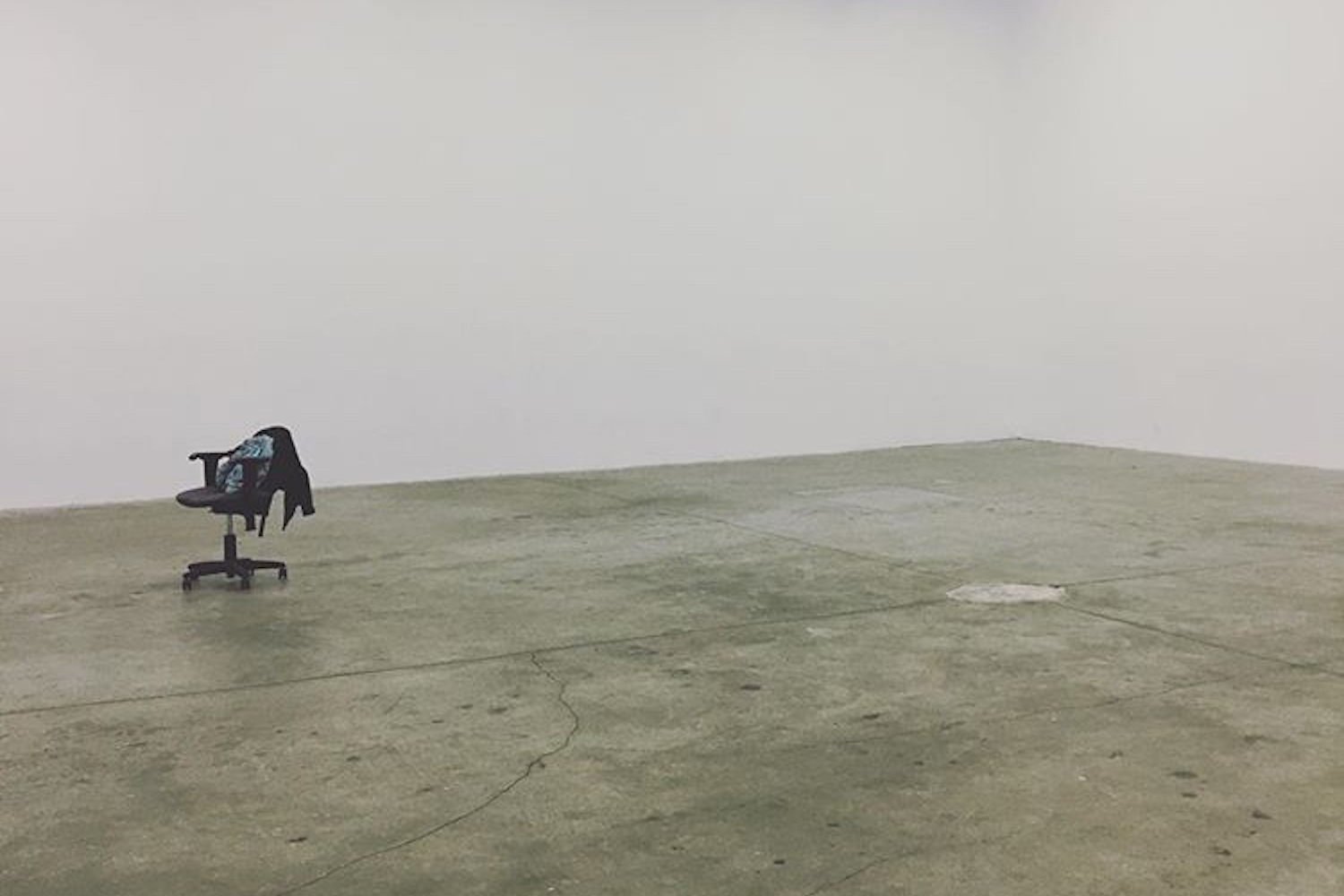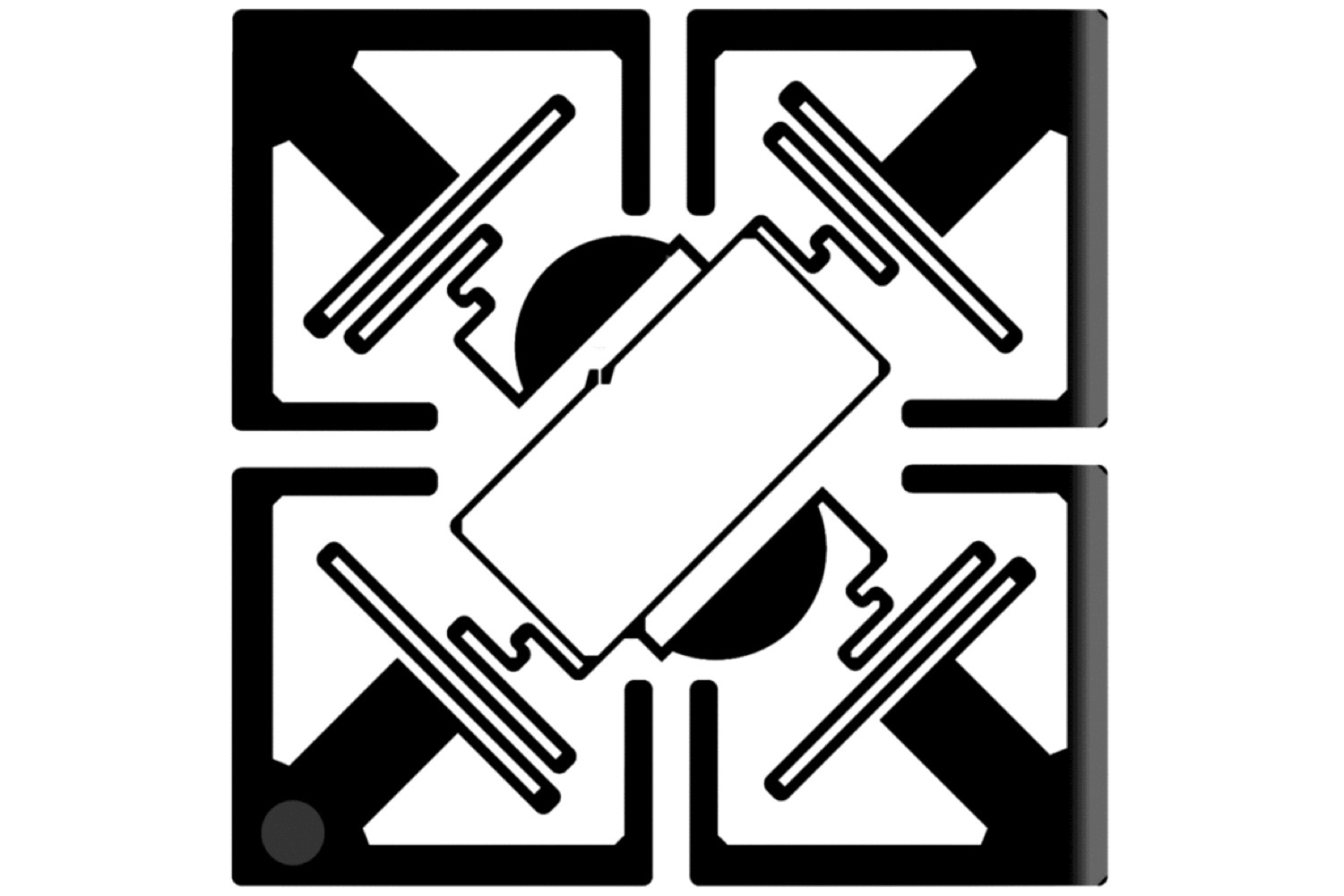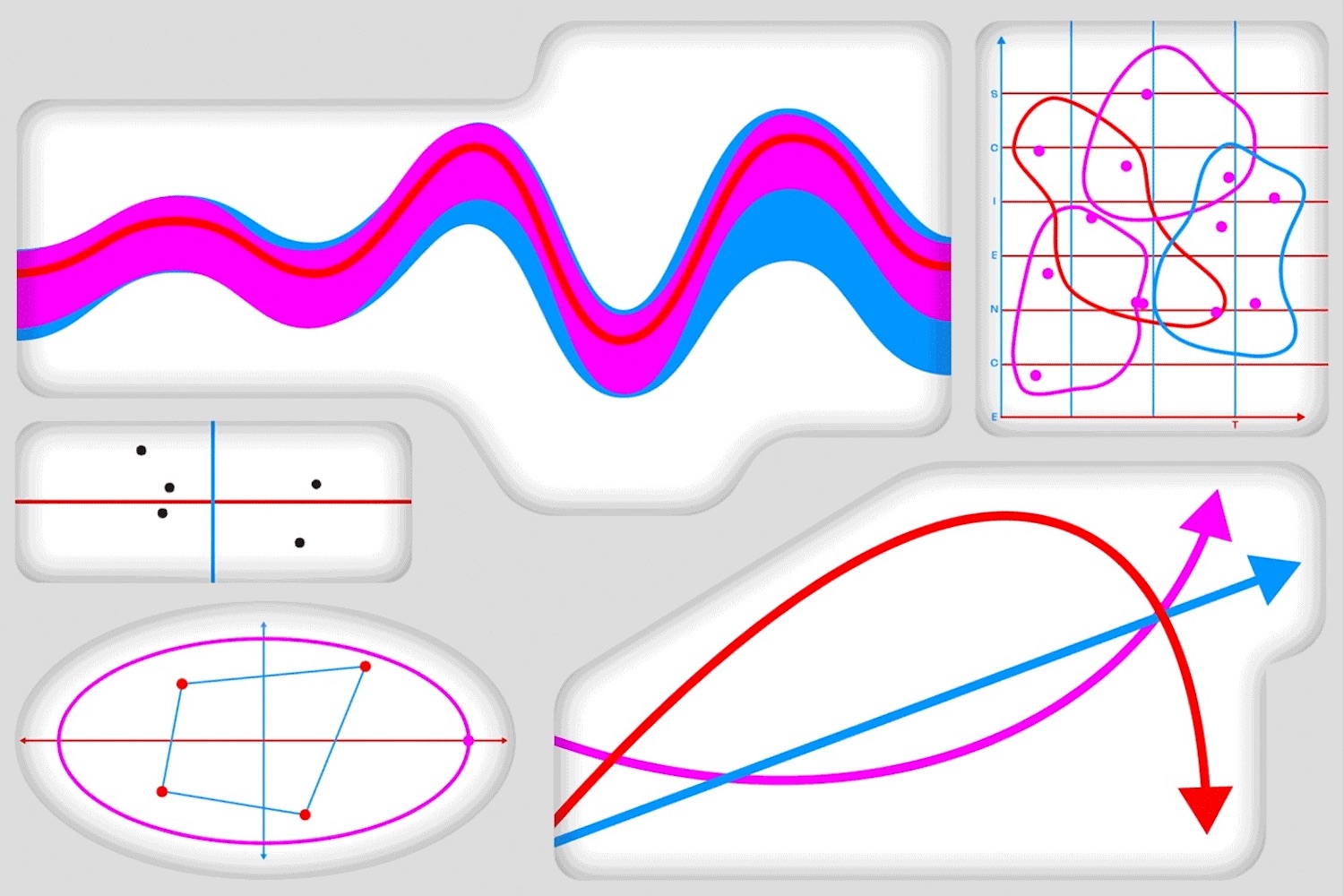“Listening In” is a column dedicated to sound, music, and listening practices in contemporary art and its spaces. This section focuses on how listening practices are being investigated and reconfigured by artists working across disciplines in the twenty-second century. This year the column is curated by Barbara London and explores how artists continue to investigate sound by incorporating up-to-the-minute software and electronic apparatuses to their practice. The best sound artwork takes its audience on an inspiring journey, one that offers fresh insight into what it means to be in the world, construing something animate and distinct by means of inorganic tools. It is through the tension between the haptic and the neutral that artists and observers discover new experiences.
Born in Spain in 1974 and now based in London, Aura Satz received a degree in art, music, and spectacle from the University of Bologna in 1998. She received a practice/theory PhD from the Slade School of Fine Art in 2002. Satz works with moving images and sonic sculptural forms to create what may appear to be minimal acoustic artworks but in fact are packed with metaphor and original ideas. She engages with performance, film, photography, and sound installation. With work that is a delightful mix of archaic technologies, she explores the complex marriage of human and machine and the uncertainty it engenders in bodily awareness and human agency. What follows is a re-elaboration of our conversation from season 2.0, episode 11, of “Barbara London Calling.”
Barbara London: I’m fascinated by how your work navigates the space between and the crossover of human and machine. It seems to me you’re constantly exploring perception, the body, and the great beyond. You told me about your peripatetic childhood. I’m very curious, how did that contribute to your practice?
Aura Satz: I’m not really sure if it did in any specific way. I did travel a lot as a child, and I had a lot of visual and sensory stimuli, from many different parts of the world. I was remembering the other day that I had some very strange formative acoustic experiences as a child. I had multiple ear infections and I used to hear my heart amplified really, really loud. I visualized it as a kind of monster that was coming for me. Other times, I’d hear things as if they were replayed really slowed down. Those little moments of doubt around what I was hearing, whether something was inside or outside, and whether it was in sync with reality, maybe were informative. I haven’t fleshed it out yet, because this is something I’m thinking out loud with you.
Maybe that was more central to my interest in a kind of slipperiness around embodied experience and objectivity, and the sensory interface with the world. Maybe that was more formative than some of the other things that happened in my crazy hippie childhood.
BL: Moving from childhood, you began your career making sculpture and photographs, doing performance and making films, using archival footage of magicians. Why does the idea of misdirection interest you?
AS: In some ways, maybe, that follows from where something in the lived experience of reality doesn’t quite fit. If you think of film and sync sound, when things are out of sync, or when you’re watching a film that’s been dubbed, there’s a similar kind of interesting mismatch between or misdirection between what you’re hearing and what you’re seeing. I find that space really generative because you go with it. So, whatever sound you play over a video, it kind of starts to articulate it and give it shape somehow, compose it; it might stretch it upwards or make you look a certain way focally or in a kind of more gestalt way. There’s something about a friction between sound and image when they fit maybe too well, or when they don’t fit, that does something perceptually and cognitively that I’m interested in pushing and testing and going elsewhere with that.
In some ways, it might have started with a work I did around magic. But really it was in 2012, when I made In and Out of Sync with the optical sound recorder of a 16 mm film camera, collaborating with the filmmaker Lis Rhodes. I had been making works that were visualizations of sound, or sonifications of the visual, and suddenly this work hit home; something else was happening when there was a slippage. When the illusion didn’t quite work, it wasn’t seamless. I guess it was an attempt to also make the audience work a bit harder, make the people visually and sonically reading the experience have to latch the image to the sound in a very different way.
I was experiencing levels of wonderment when I tested different things in this way. It takes me both deeply into my body and totally outside of it. It makes the boundaries of self and not self porous. And that has all kinds of other implications, not just on a kind of physical level, but it’s conceptual and philosophical and ideological as well.
BL: This leads wonderfully into my next question. We could say that there are two major strands to your work. One is music, sound, technology, vibration, and acoustics. The other has to do more with gender and the contributions women have made to new technologies. I understand you began working with sound in 2002, when you were pregnant and you were using your belly as a kind of instrument. The resulting artwork was Ventriloqua, which was performative. The pregnant you became a musical instrument, a channeling device. Could you tell me something about how you connected ventriloquism to the very mysterious theremin instrument?
AS: For those who aren’t familiar with the theremin, it’s an instrument you play without touching. Unlike the piano where you have a keyboard, the theremin has an electromagnetic field, and you move your hands near a rod, as it were. You have to find the pitch, and then whatever your starting point is, you build up the keyboard equivalent in this way. That in itself was interesting to me, because there’s a very intuitive bodily way of interacting with something that is invisible, and that suggests hand gestures and sign language, and a whole range of other linguistic forms that aren’t voice or writing or even musical notation. I’ve done a lot of works with the theremin, which I find really fascinating.
When I was pregnant, I had this powerful experience of understanding myself as a vessel or a container for another voice. When I was talking earlier about this porosity between inside and out, between self and non-self, there is this really strange possession, not in the horror-film kind of way, but literally — as anyone who is pregnant knows, I had another body inside of me. What was interesting was to try and imagine what this voice might be, and not to think of it in terms of being this mother figure. It wasn’t really about procreation as much as having other voices inside of me. The ventriloquist dummy is precisely that; it’s a trick, a misdirection, a voice through a dummy, through a doll, of sorts. But also, originally throwing one’s voice wasn’t necessarily even connected to an object. It could have just been that you threw it in a room in such a way that it didn’t seem to be coming from you.
That slippery sense of where the voice sits is ultimately how sound operates acoustically. It’s already inside of me, emanating from my body, but it’s also hitting the walls, absorbing the acoustics of the room, going through a sound recording device or telephone, a telepresence elsewhere. There are lots of ways in which the voice is already doing that, but it seemed to me particularly interesting at that point. I literally had this other voice inside of me. I was a kind of antenna that could be tuned into, to manifest it, to bring it into speech. Again, the otherworldly sounds that are made through the theremin suggested this notion of a possible language that doesn’t completely resolve itself as language. That’s how it sounded in this particular occasion, as if the unborn child, which also looked like a kind of swollen eye or orange or something quite surreal, that it was communicating something, but we didn’t know what. That seemed very poetic and powerful to me.
BL: In following your work, you combine many ideas. In 2008, you made Automamusic, a film about mechanical music, and that was a moment when you moved away from sculpture and performance and you prioritized filmmaking. And in 2010, you made a film, Sound Seam, about phonograph grooves, and you continued this really strong interest in sound. I’d like to know more about what drew you to older technology, certainly the theremin as an instrument, as an older technology, but the record and the grooves is another aspect.
AS: Nowadays, even though I’m working on a project that I thought wasn’t about obsolete technology, the threat of obsolescence is always lurking in the background, especially with the rhythm of technology nowadays. What’s interesting about it is manifold. It’s the moment in which something is invented and changes our understanding of a kind of paradigm. Mechanical music and the phonograph are the first instances of the possibility of the playback of something, in the case of mechanical music, played back from a code, the equivalent of notation in mechanical form. This is essentially binary code, which later leads us to computers, through the Jacquard loom.
The phonograph groove is a similar kind of playback of recorded voice or recorded music. It produces a writing that can’t be read by human eyes; it can only be played back by the machine. It’s a one-way type of writing. Forms of language or communication that suggest a system or a code of sorts, but that aren’t completely accessible to us or decipherable, is interesting because it opens up a space for possibility for a kind of fresh, nuanced, unusual encounter.
Those initial moments when people encountered mechanical music, what did they think? How did they experience that instrument sculpturally, performatively, in terms of a form of writing and reading back? In terms of actually being displaced in time, time traveling through voice — for me this was an interesting way of breaking down the interfaces, the technologies, the prosthetic tools we have around us that help us interface with otherness.
Those projects of mine were formative. Back then I was interested in rewriting and playback and memory, and a kind of recovery, of sorts. The works I did around women in electronic music were partly about that as well. I was looking at pockets of history that maybe hadn’t been heard or seen in that way. I’m still really invested in that, but I guess I’ve moved away from a historiographic approach. I feel that the projects I’m working on right now need to face forward. A lot what I’m doing is around retuning. I love the theremin, because each time you have to kind of tune yourself to the instrument afresh. An attempt to retune and recalibrate and position yourself in relation to the conditions of the world seems really key. That’s a survival strategy that I’m really committed to in my practice now. A few things have changed. There’s a lot of continuity, a lot of things that I carry forward, but I’m less interested in looking at technologies that have been forgotten, in the way that I was at that point in time.
BL: Perhaps now you could say a few words about a work that did look at old technology, such as your film installation Doorway for Natalie Kalmus (2013). I don’t think many people know who she was. That work looks at the analog color-grading machine and the mechanics of its lenses, mirrors, and color filters. Natalie Kalmus was married to Herbert Kalmus, the inventor of technicolor. I love the idea that she herself worked with color as if she were composing music. We could use the term synesthesia for what she was doing.
AS: I was really interested in the color lamp house. [In filmmaking, it’s the housing that holds a lamp]. I came across it while I was making In and Out of Synch (2012), about optical sound on film. The device is a really beautiful, tiny pocket, as it were, in the machine where you originally would have graded a film. [Grading is the process of changing color and brightness of individual shots to make them more consistent and perhaps even help create a mood for a particular scene or for an entire film.] There are so many strange lines of continuity. For example, the code was binary code, so it looked like the perforated paper of a pianola music score. When I shot that film, we composed a musical sound sequence for the rhythm of the portals, the little doors in the device that allow a certain amount of RGB — of red, green, and blue — to expose the film and grade it.
The three little doors, multiple lenses, mirrors, and prisms in the color lamp house, are really stunning. A lot of my works make reference to this notion of a door, and I’ve always thought of the works as portals. My voice and my mouth are a portal of sorts.
Nathalie Kalmus composed the color scheme of many famous technicolor films: Gone with the Wind, The Wizard of Oz, and many others. She herself is not very famous, and maybe only recently has been given credit. I was desperate to see her color scores, but wasn’t able to find any. I was drawing a slightly bizarre lineage with her work and Paul Sharits’s films. Some of the visuals of my film were referencing his work with color and afterimage, in that way.
Kalmus had a life-changing experience, where she communicated with people on their deathbed, in particular, her sister. I came across an article Kalmus wrote called something like “Doorway to Another World.” I thought it was evocative, that the doorway is almost like a ghosting of her thinking around color and the process in relation to film. She would think of the narrative in terms of a color spectrum, a color code. What should the actress wear? What should the backdrop be? What color should the curtains be? Really thinking around narrative to draw out chromatic quality, which wasn’t quite abstract in the way that structuralist film was later. There’s something really fascinating, going back to the idea of notation and scores that are suggestive of some sense of musicality, even if they aren’t at all.
BL: To go on, I love how with your work Impulsive Synchronization of 2013 you were inspired by Hedy Lamarr. She’s known as a famous actress from the 1930s and the ’40s. But during World War II, she had just immigrated from Germany to America when she met the composer George Antheil. He was a bad boy of American music. He had been experimenting with synchronizing sixteen self-playing pianos, ones that contained a pneumatic or an electronic mechanism that operated the piano action via programmed music recorded on perforated paper. Antheil and Lamarr together came up with an idea that they called “frequency hopping,” which they patented in 1941. Frequency hopping had to do with transmitting radio signals along rapidly changing, or “hopping,” frequencies that were resilient to jamming or detection, and safely getting information across. It was used by the Americans during the war. Did that interest in Lamarr lead to your investigation into women and computing?
AS: That was one of those projects where the backstory was too dense and incredible. She was a Hollywood actress, but she had been married to an arms dealer in Germany and had sat at the table with Hitler and Mussolini. She was super smart and had this engineer’s or inventor’s brain. She came up with quite a few ideas that I don’t think ever got patented. One was a bouillon cube for soda, like Coca-Cola. Another was some kind of facelift accordion device, as well as a traffic light system. America was at war, and inventions from the general population were solicited. George Antheil had been making music with mechanical pianos and also with the sounds of war and industrial sounds, a bit like the Futurists. Together they came up with the frequency hopping idea, which is based on the pianola perforated paper principle, in that there would be two devices that would be hopping between frequencies like the perforations on pianola paper. The devices would communicate to each other remotely, and therefore they would jam the signal for the enemy. Their device wasn’t used in World War II, but supposedly was used during the Cuban Missile Crisis. The fascinating thing is, that patent morphed into and became the basis for Wi-Fi and broadband. So, Hedy Lamarr is considered the godmother of wireless telephony.
Before, in 2011, I made a project around Daphne Oram, which was looking at optical sound on film and had led to composition using visuals through film to produce a synthetic sound, a sound that comes from a drawing or from the visual and is sonified. The pioneer of this, Daphne Oram, made the incredible Oramics Machine, which she patented. With these projects around women and technology, I was interested in the notion of authoring a new language, a new code. It connects to the ventriloquist trope, a distribution of disembodied voices, which is where we’re at now and what we’re doing together right now in this moment [talking] across the sea. Oram devised a whole new notation system, a new visual form of sound writing. The sounds that resulted from the Oramics Machine sounded very otherworldly, and initially were used much like the theremin, either for horror films or for sci-fi. You don’t know what the totally abject bodiless object that makes that sound could look like. Oram made the soundtrack for The Innocents [a 1961 psychological horror film directed and produced by Jack Clayton.] One doesn’t know what the ghostly presence lurking outside the window making the sound might be. And equally, sci-fi suggests a potential future or the alien, not of this world.
Often, I have inhabited that sonic realm. I think it may be connected to this notion of a haunting of both of the past and of the future, a ghost communicating with us now, but also the thing that doesn’t have a clearly defined boundary, a clearly defined body, a clearly defined sense of where it sits, who it is, who it’s for, who’s been communicated with. I like those kinds of sounds.
Just to rewind a moment to the Hedy Lamarr project, I took this idea of encryption quite far. I used a section of the text of the patent, which defined the secret communication text, and I turned it into Morse code. I watched many, many Hedy Lamarr films and I found one that she did with Jimmy Stewart, in which she used a flashlight [Come Live with Me, 1941.] The metaphor was fireflies communicating. She’s there with a flashlight communicating to him in the romantic comedy. I just had that one still of her kind of pulsing, moving back and forth according to the Morse code. It was projected onto a scrolling pianola, a screen made out of multiple pianola rolls, which had a George Antheil score printed or perforated onto it. Because the scroll was moving slowly, when the light hit through you got these kind of little twinkling moments of interference or light patterns. The story was much bigger than what I could do with it.
BL: That’s fascinating. I love the story of Lamarr. She’s such a cinematic icon, a strong figure. Your interest in sound and the other worldly brings us to your work Dial Tone Drone (2014). To me, it’s a brilliantly concise work that I’m very happy to say is in the Kadist Foundation’s collection. It’s also featured in my “Seeing Sound” exhibition, which is currently circulated by Independent Curators International. I’ll just give a little description. When Dial Tone Drone is installed, the visitor is invited to pick up the vintage telephone handset, or they may call the number provided from their own smartphone. Then they hunker down and listen to a prerecorded conversation between two old friends, the respected electronic music pioneer Pauline Oliveros and the composer Laurie Spiegel. The pair congenially discuss the use of drones in their own music: the use of sustained notes, sounds, or tone clusters in their music.
The two friends eloquently get into the nitty gritty of how the telephone dial tone drone is simply an indication of the potential for communication. I know that you have a longstanding interest in alert signals. Do you want to give me a little backstory to this work?
AS: My project Impulsive Synchronization (2013) already pointed in the direction of telephony. I was really interested in the role of women with early media, their enmeshment with these new technologies of telephony or telegraphy, forms of inscription and recording and broadcast or dissemination. As women were joining the workforce, often it was as telephone operators or typists. They were the conduits rather than the authors. Telephone operators were called speech weavers, and that’s such a beautiful image in itself.
I made a couple of works around the telephone. Even in lockdown, I made a new one quite recently. What interested me about this is the notion of a kind of telepresence, like projecting one’s voice, but also connecting voices so that these multiple diverse voices are somehow, for a moment, part of the same circuit board. While I was making this piece Dial Tone Operator (2014), that was more historical in terms of telephone operators, I was really keen to work with Laurie Spiegel and Pauline Oliveros for a different reason. Laurie had been artist-in-residence at the Bell Telephone Labs, and did a lot of her most important work there. And Pauline had been working with telepresence for a long time, way up to when Skype was born. Their works were about pushing the boundaries of where the performance takes place and who and how we communicate with and across. It seemed interesting that they both worked sometimes explicitly with drone sounds, as in the case of Pauline’s work. Laurie wouldn’t necessarily define her work as drone, because as she says in the piece, a drone isn’t static. You might hear it initially as static, but what happens perceptually is that as you’re listening your mind adjusts, and then you start to go deeper.
It’s like when you look through a magnifying lens, you start to see more details, or when you start to hear a wider bandwidth of sound. Depending on the nature of the sustained note that you’re listening to, either your mind will imagine smaller patterns within it, so that you can perceive change where there’s very little change. Or, depending on the sound that is played in this way, you might actually start to delve into its textures and the intricacies and filigrees of what’s in that sound. I’m inspired by this notion of close listening, or as Pauline would call it, Deep Listening, and a kind of attention to having ears, or to hearing through vibration, whether you have a kind of neurodiverse or aural diverse ways of listening.
I like that idea of really becoming aware of having a body that is experiencing some kind of sonic or vibratory input. And at the same time, paying or yielding your attention and surrendering to that sound. The dial tone is in part that, if you listen to it. Although nowadays with the smart phone, we don’t have the landline’s dial tone, which is basically the equivalent of the female telephone operators voicing, “What number please? Who can I connect you to?” That tone was saying, “The line is open.” It’s the space of possibility, of connection, and I thought that was really poetic.
Both Pauline and Laurie had reasons to be somehow aligned with the history of telephony. But they authored, they coded or programmed a whole new way of producing sound, and with that, a method of listening to the sounds that they composed. It was a really beautiful experience. I feel incredibly privileged to have made that piece with them and to have met them through making that work. Since then, I’ve made other projects with Laurie, as well.
I like alert sounds because in some ways they are a prompt. They are kind of semantic code, not quite sounds and not quite music. With my project on sirens, the kind of alerts that I’m looking at now are calls to attention in a similar way. They are a code that we’ve learned and are taught to listen to in a certain way, to then take certain actions or preemptive measures in the case of a siren. I’m interested in trying to open that up and make us question that code, listen to it differently. What happens in Dial Tone Drone is that you listen, you dip in and out of the experience of listening, and are guided to have insight into Laurie and Pauline’s way of listening. Through what they’re saying, you are partly under the skin or under the eardrum, or whatever the expression would be. You’re inside their listening, as well.
BL: That is a wonderful way to now go into today, how smart phones tend to provide a soundtrack for our lives. As I walk down a New York City street, I always see people with earbuds on, engrossed in what they’re doing with their phone. In a way, we become unaware of what sounds we pay attention to and what we ignore. It seems that how an individual internally recalibrates and adjusts is one of your guiding principles. How does that play into your very new project? It will be your first feature film, a complex and amazing research project called Preemptive Listening. Can you talk about it?
AS: Several years in the making, it’s all I talk about at the moment. It is a strategy for surviving as much as anything. It is about recalibrating what we pay attention to, what is worthy of attention, what we understand as an emergency and what we deem worthy of whether we want to call it preemptive action or some kind of rescue or some kind of help. I feel that the crisis we’re experiencing now, which is both the crisis of attention in the sense that, as you said, with regards to smart phones, the world is cacophonous, it’s overwhelming. There’s a kind of constant, relentless sensory input, and it’s distracting. Within this crisis of our attention, there is also a kind of state of emergency. We’re feeling it very intuitively, as if we’re in a state of hypervigilant alert, and yet it’s completely paralyzing.
Whether it’s climate change or other forms, we’re still in the middle of a pandemic, although we’re pretending we’re not. There are so many things that are calling for our attention, and it’s very hard to know how to navigate, how to listen properly. In many ways the project is trying to address this, trying to reframe what we understand as emergency from a kind of immediate timeframe. Fire is a good example. There’s smoke, then there’s fire, fire alarm, and then hopefully people go to the rescue and put out the fire. But right now, and it’s been in the making for a very long time, multiple fires are indicating something very different, beyond the kind of immediate emergency framework.
Climate change, the slow violence and the systemic kind of violence of climate catastrophe, how do we reframe and understand that? The siren is a portal or a way in, a metaphor to start thinking around that. The key element of the project beyond the diagnosis of where we’re at in terms of emergency more generally, our attention, our capacity for attention, is to try and recompose the siren. A bit like a dial tone, this prompt, this sustained note that communicates a signal of the possibility of communication. Here I’m taking another familiar signal, a call to attention and instruction into action, trying to recompose it and think what might happen if we do both in very grounded terms. What would an alternative siren sound like? Because the ones we have now, we’re not hearing them properly. They’re loud, they’re competing, they’re blaring, everything is beeping from our microwaves to our seat belts, so not just sirens and emergency vehicles. There are other ways in which to think speculatively, imaginatively, and poetically around the siren and try to reinvent; it might open up alternative ways of crisis management. That’s really where I want the project to go. I’m less interested in looking back and more interested in facing forward. This project allows me to do that, and do it collectively.
I’ve invited different people to collaborate with me, such as musicians to compose new sirens. I’m consulting with different people who have different areas of specialization to see if I can somehow forge a new tentative of understanding of emergency signals. And within that, ways in which we understand and deal with emergency more generally. It’s an ambitious, giant leap for me in my practice, and is all-consuming. Every time I speak to someone about the project, everyone has a personal experience of some sort of emergency sound. Sometimes it’s a trigger, sometimes it’s a commemorative sound. Early on in the pandemic, China played a siren as a kind of commemorative pause, and it’s used similarly for Holocaust Remembrance Day. These are ways in which the siren is not just a future-facing emergency, but it’s also a trigger or a moment of collective silence. It’s like a prism that opens up to thinking around collective listening, collective action, the future, the future that may or may not come to pass. It’s about preemptive action.
BL: Your Preemptive Listening project leads into my very last question, one I’m asking each of my guests. Given the ups and downs of the past eighteen months and the struggles we’ve all faced in trying to adapt, how has technology affected you and your practice?
AS: I’ve come full circle. During the pandemic we were all glued to our phones. My family all live abroad, so I was speaking to them every day. I had really wanted to reach out to Éliane Radigue, a French composer who used to work with electronic music and has worked with beautiful iridescent drone sounds. But in the last twenty years, she’s made acoustic work with musicians by transmitting the score to them through a conversation. The score might be an image of water, perhaps Lake Geneva. Together with her and two of her long-term collaborators, Rhodri Davies and Julia Eckhardt, we made a piece that used similar principles to the Dial Tone Drone. The new work was about transmission, the transmission of a score, about the experience of listening to it, and the thinking as a musician, as a composer who was transmitting a score and then hearing it come back to her. That was a beautiful experience, done remotely last year.
The siren project has been all-consuming for a while now, but with the pandemic, it’s ringing out really loud in my head, relentlessly in a compulsive, in a positively compulsive way. I’ve made a lot of progress with the siren project, a lot of deep research. In a strange way it’s been good.
Last month I did a shoot in Fukushima, where I had someone be my avatar. I did all of the preliminary research online using Google maps, then worked with people who knew the lay of the land. The shoot went from 10:00 p.m. until 6:00 a.m., my time. It was a COVID-friendly, CO2-emissions-friendly workflow. I don’t necessarily have to go everywhere to shoot. It’s been fascinating and rewarding. Certainly, in terms of my creative practice and my creative workflow, it’s been useful.
BL: I’m happy to know that there were positive aspects to the last year for you. It’s been great to talk with you, even though we’re in different parts of the world. It’s very special. Thank you so much for joining me.

